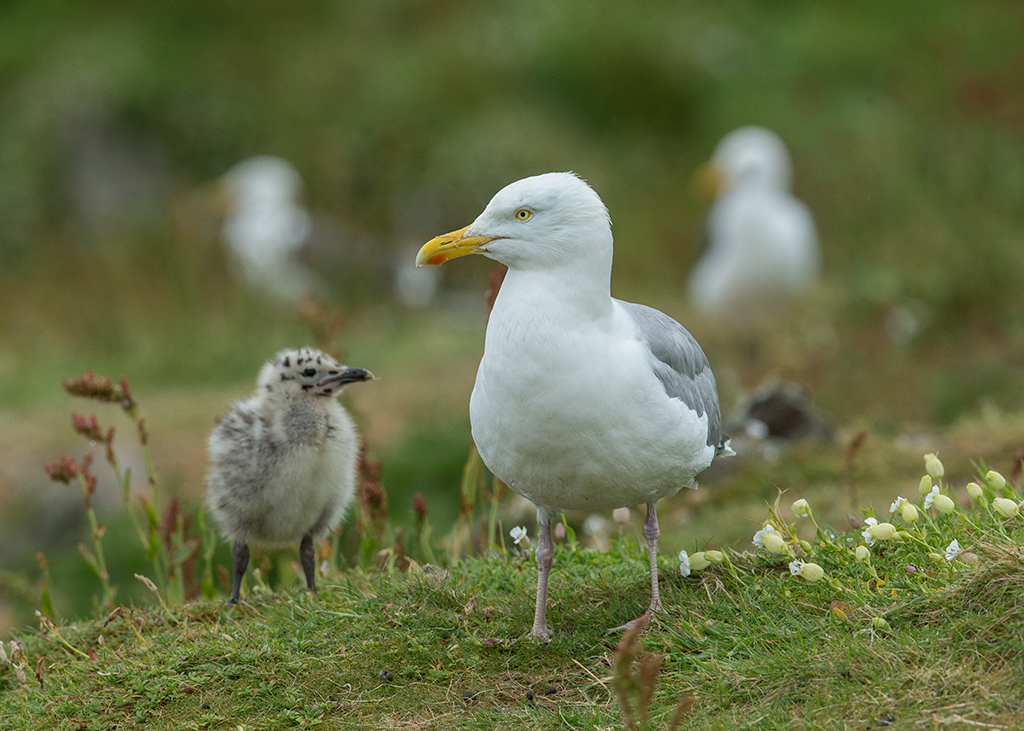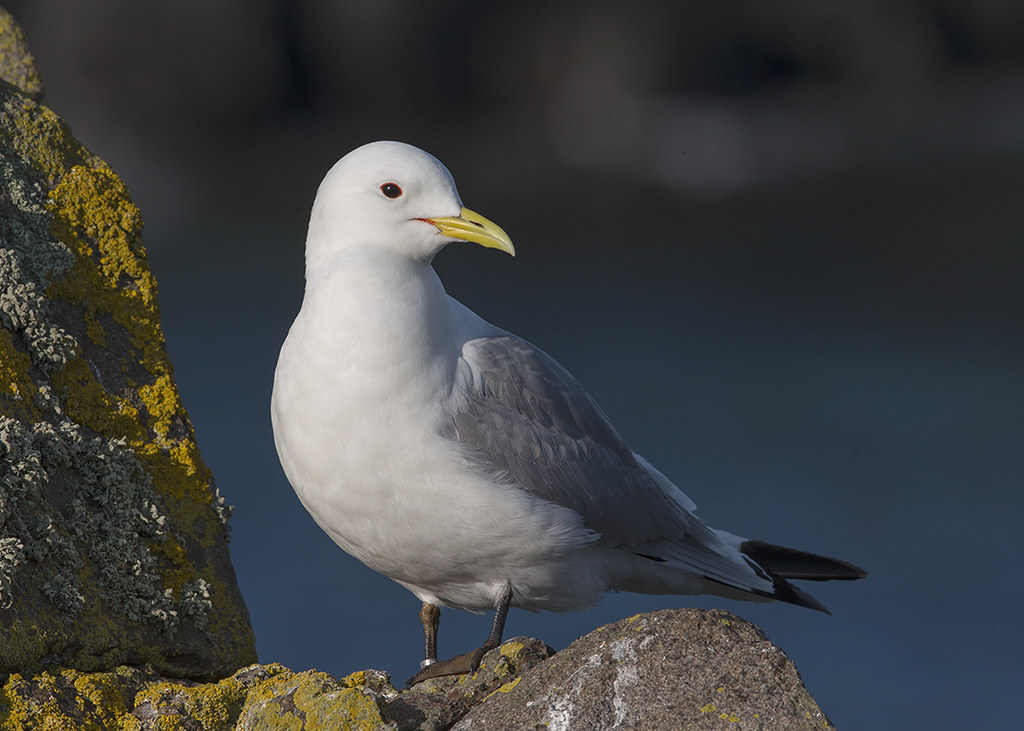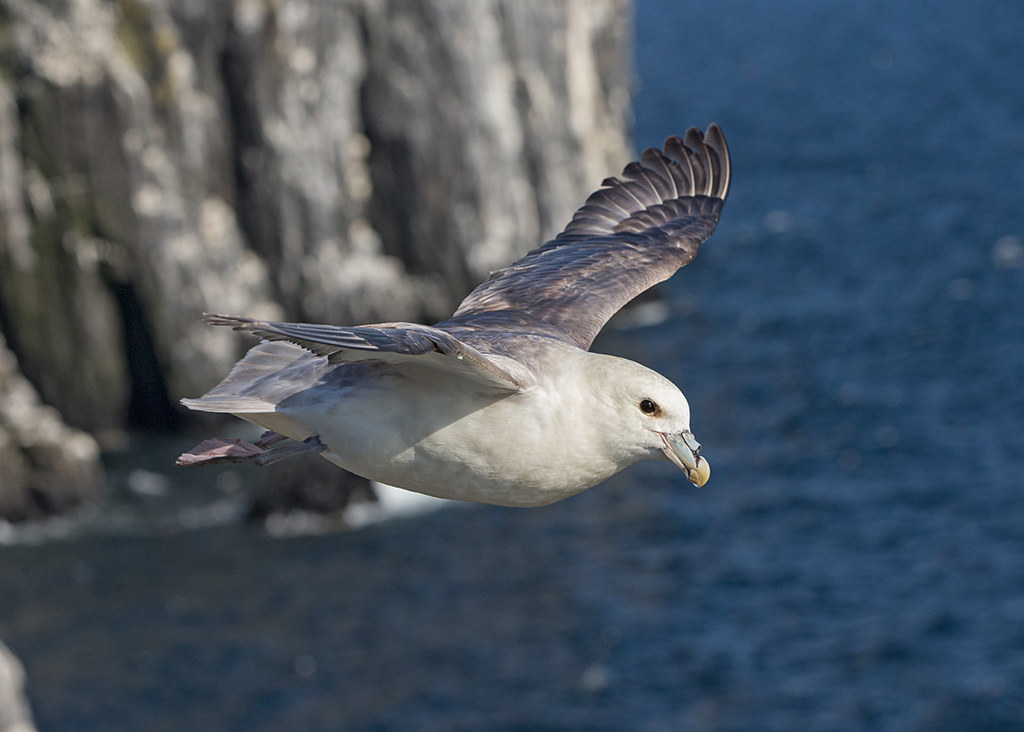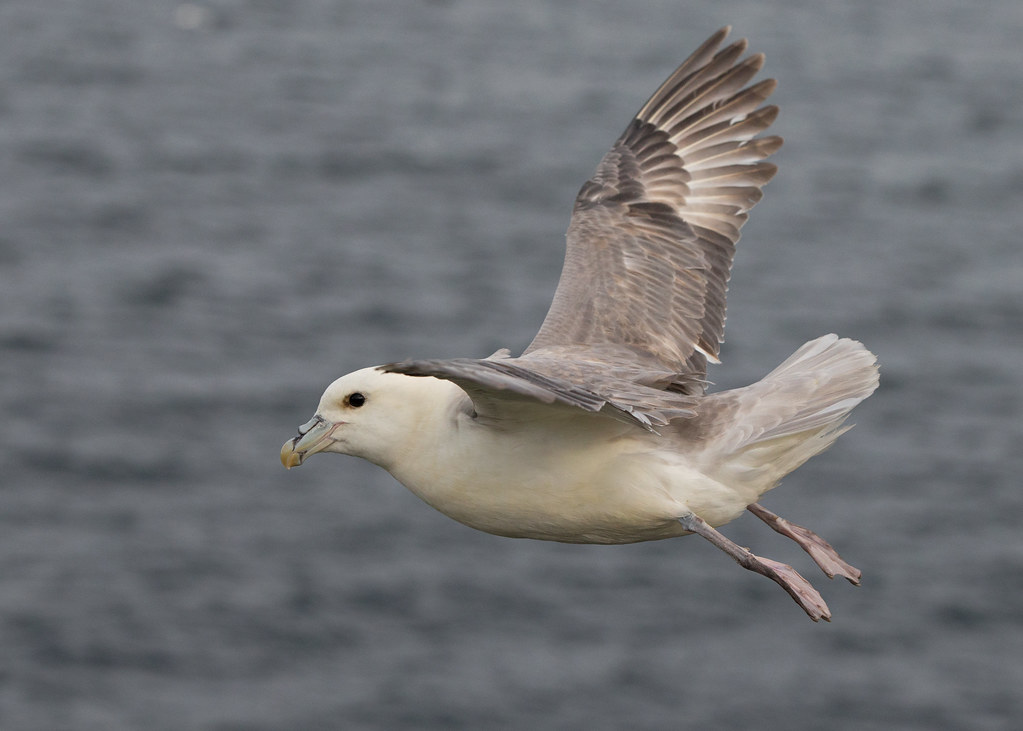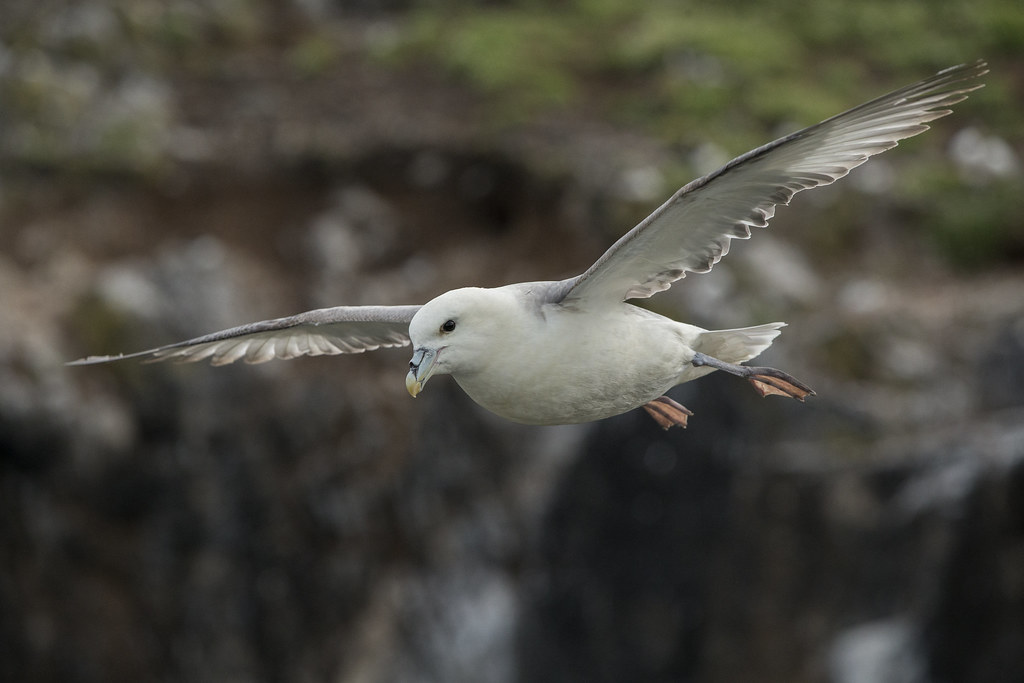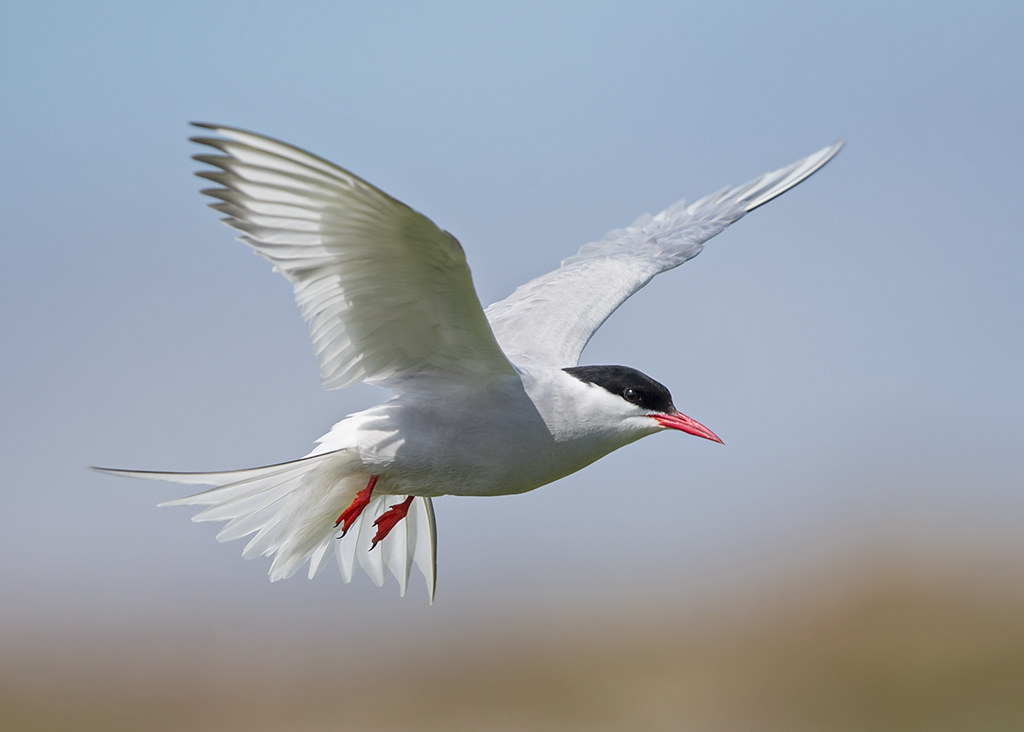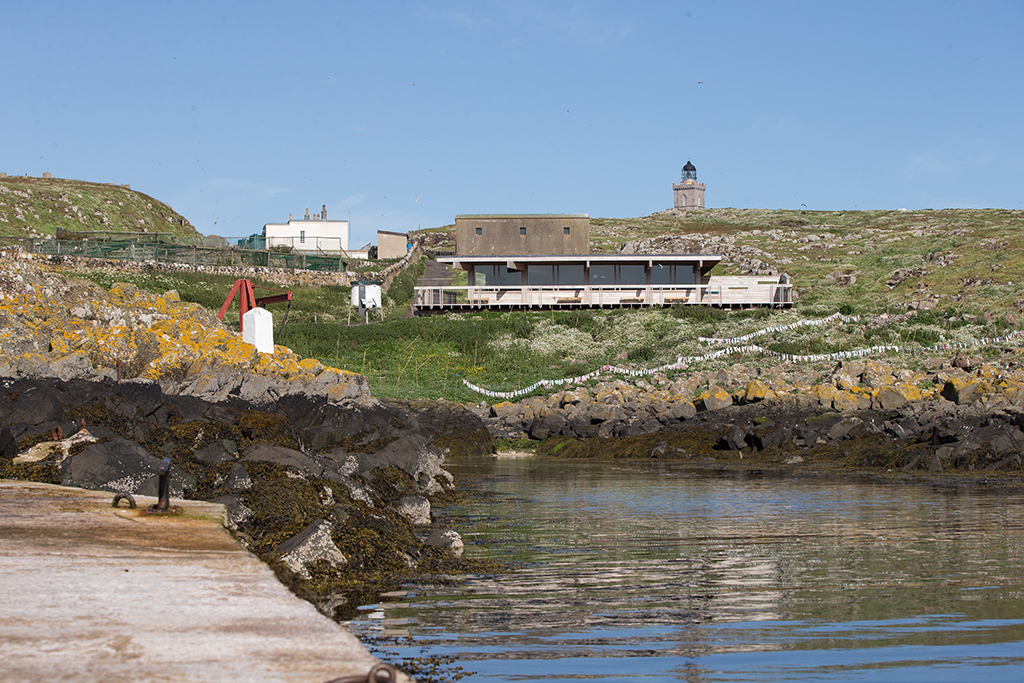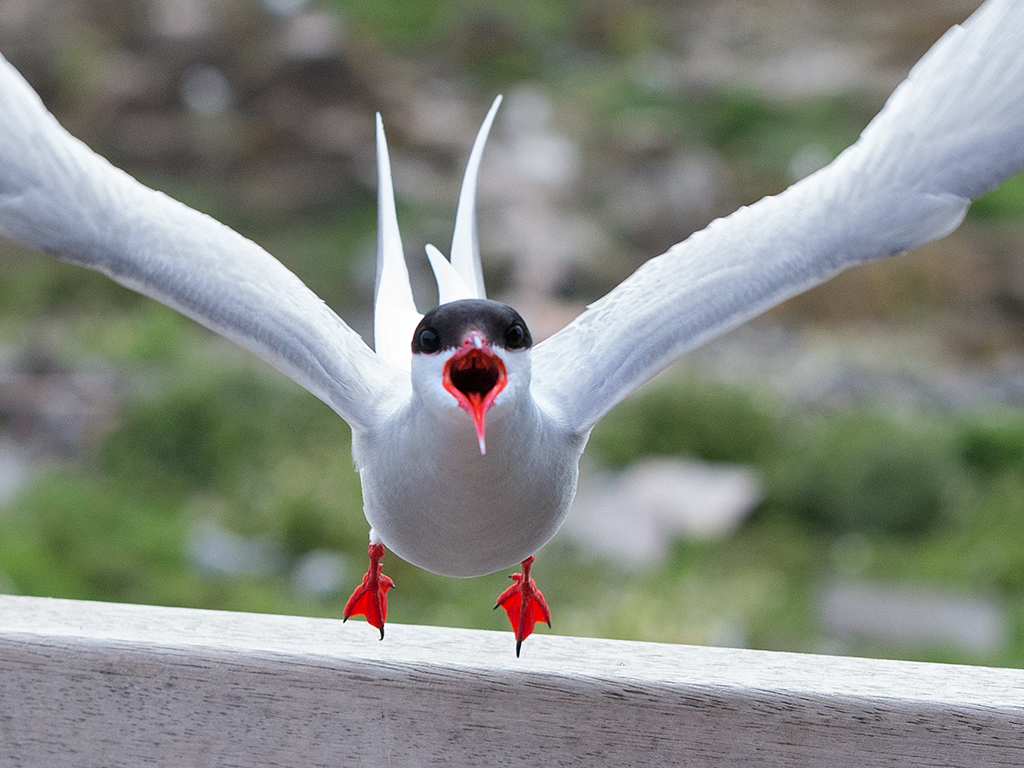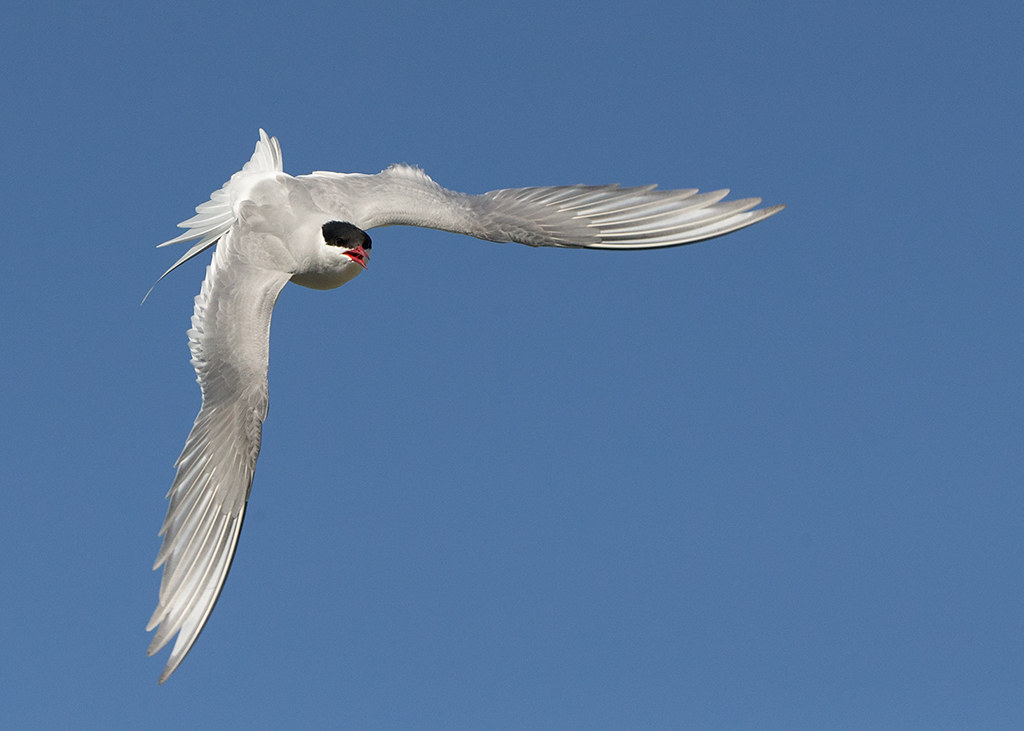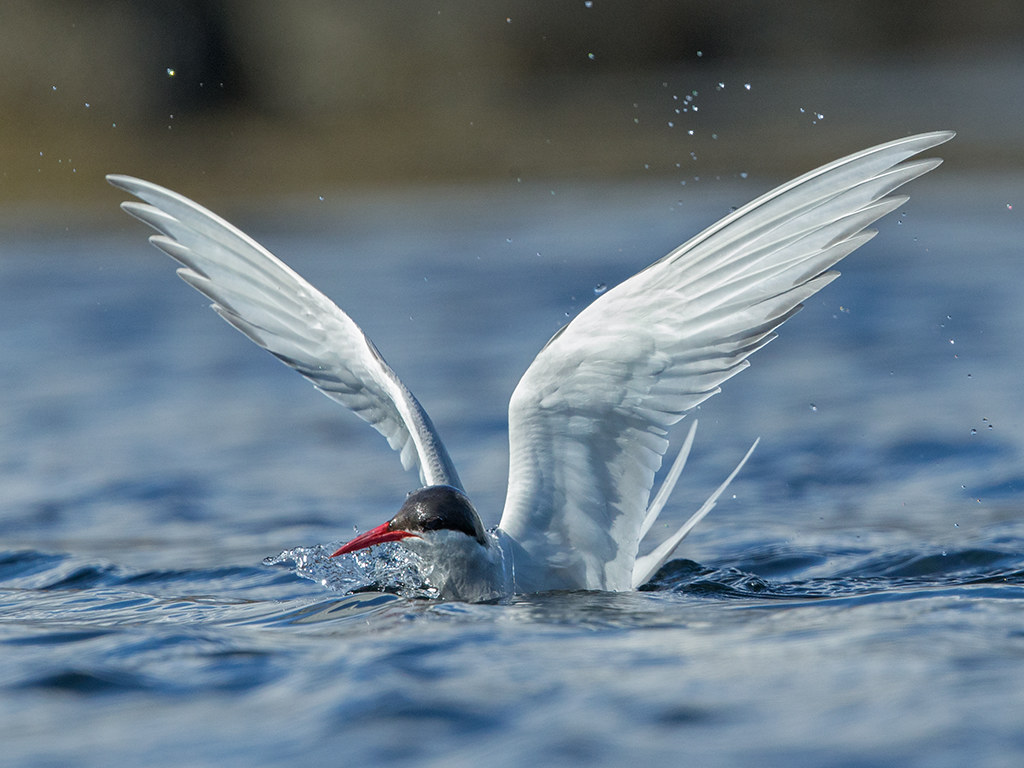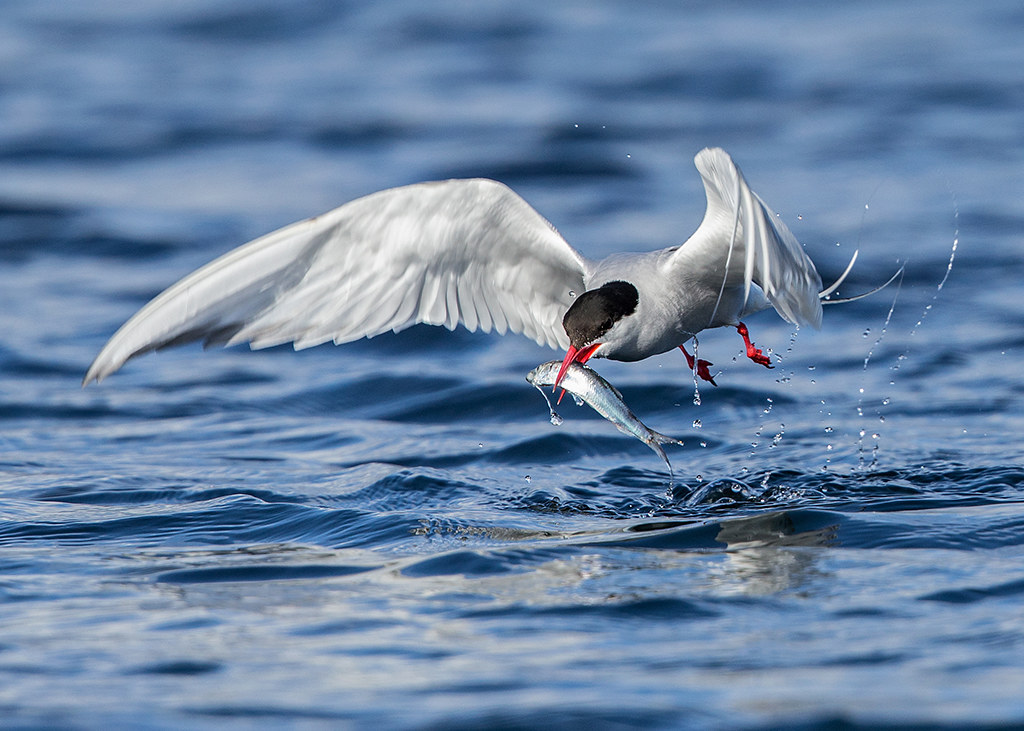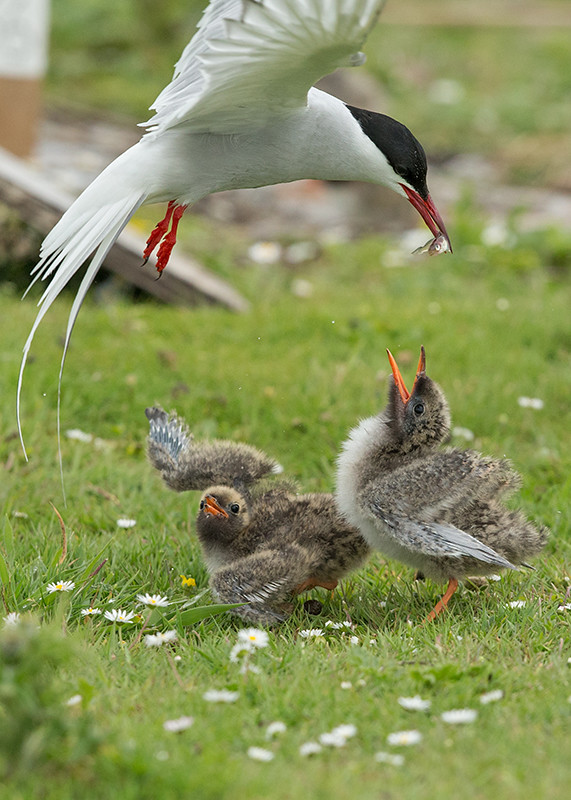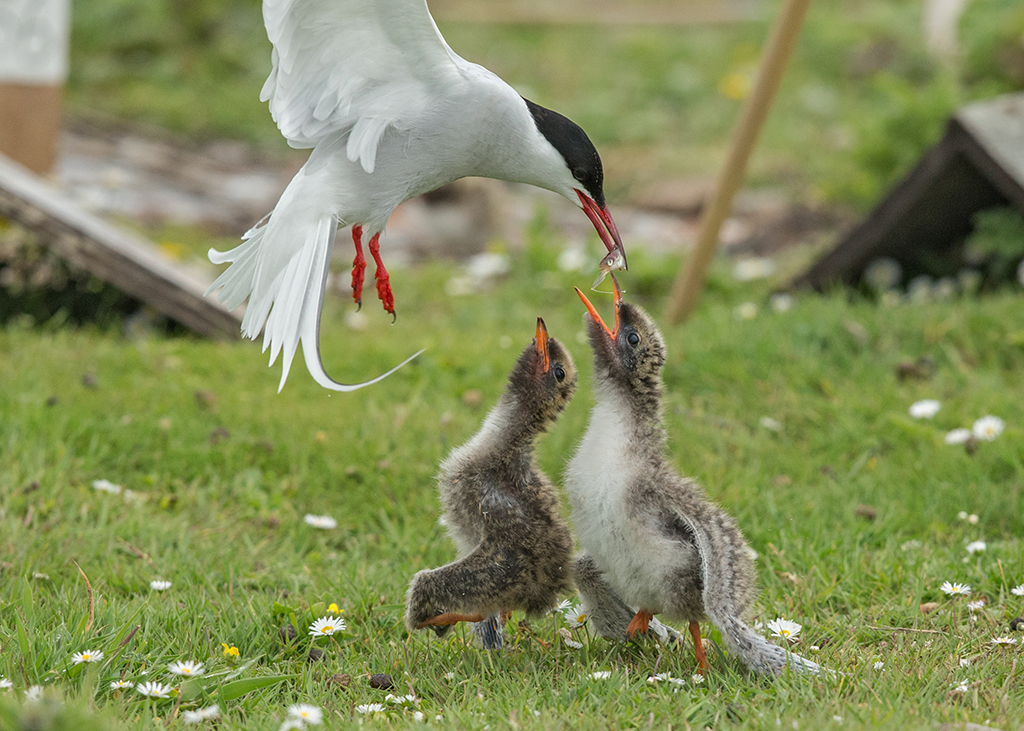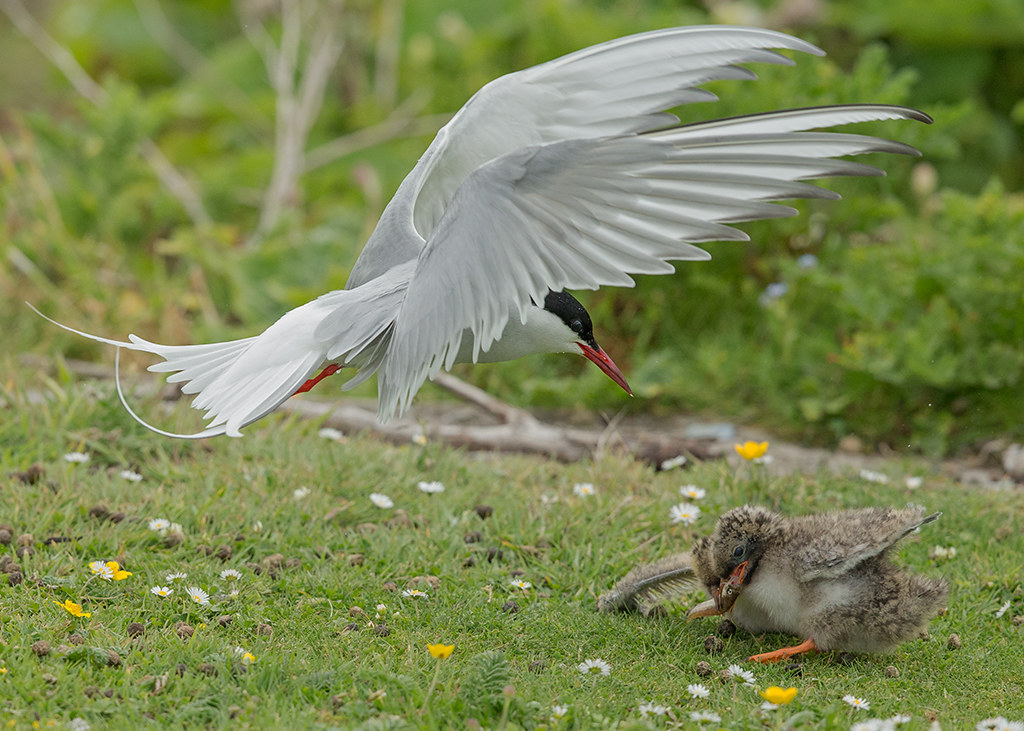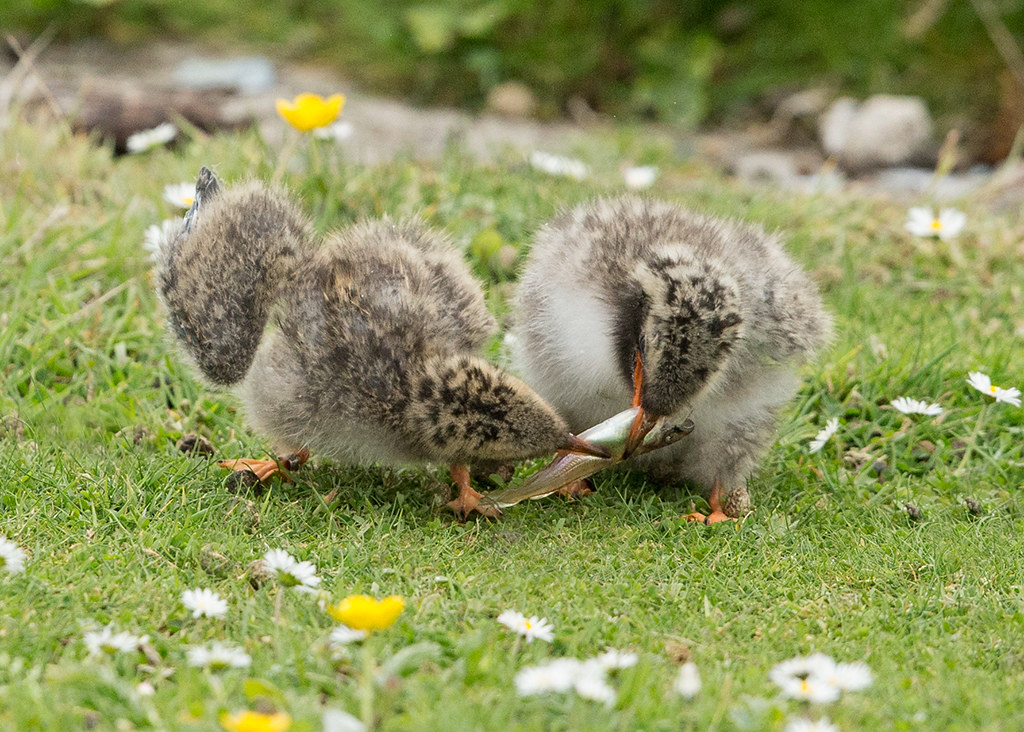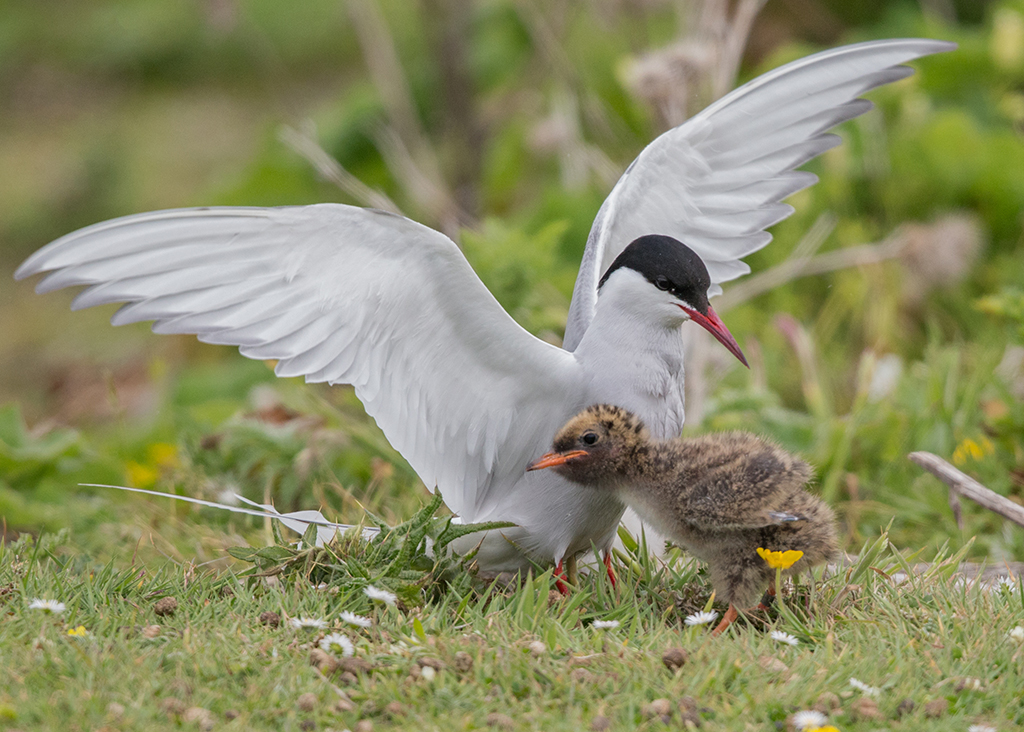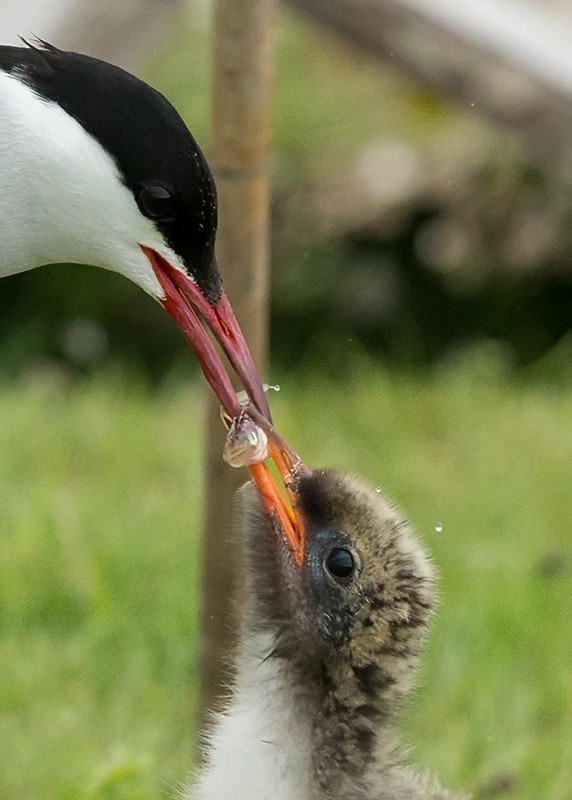The day after I arrived on the Isle of May I was greeted with the news that two Roseate Terns had been seen amongst the many roosting Arctics that sat on the seaweed strewn rocks on the opposite side of the landing stage across the deep water channel.
This was something special for me. I had only ever seen one, several years ago at Minsmere, and it had been too far away to either photograph or successfully look at the finer points. Here was an opportunity not to be missed!
There were two but only one had been ringed and that was the furthest away.From a photographic point of view the better of the two was a bit closer !
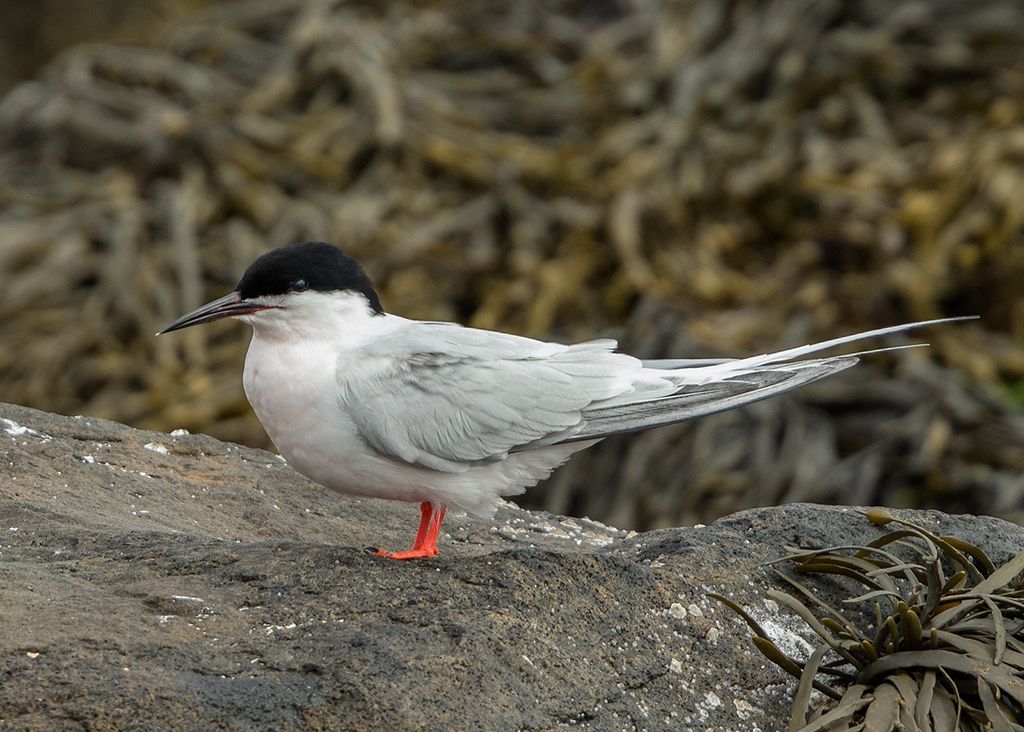 An elegant bird but easily confused with an Arctic to the untrained eye.
An elegant bird but easily confused with an Arctic to the untrained eye.
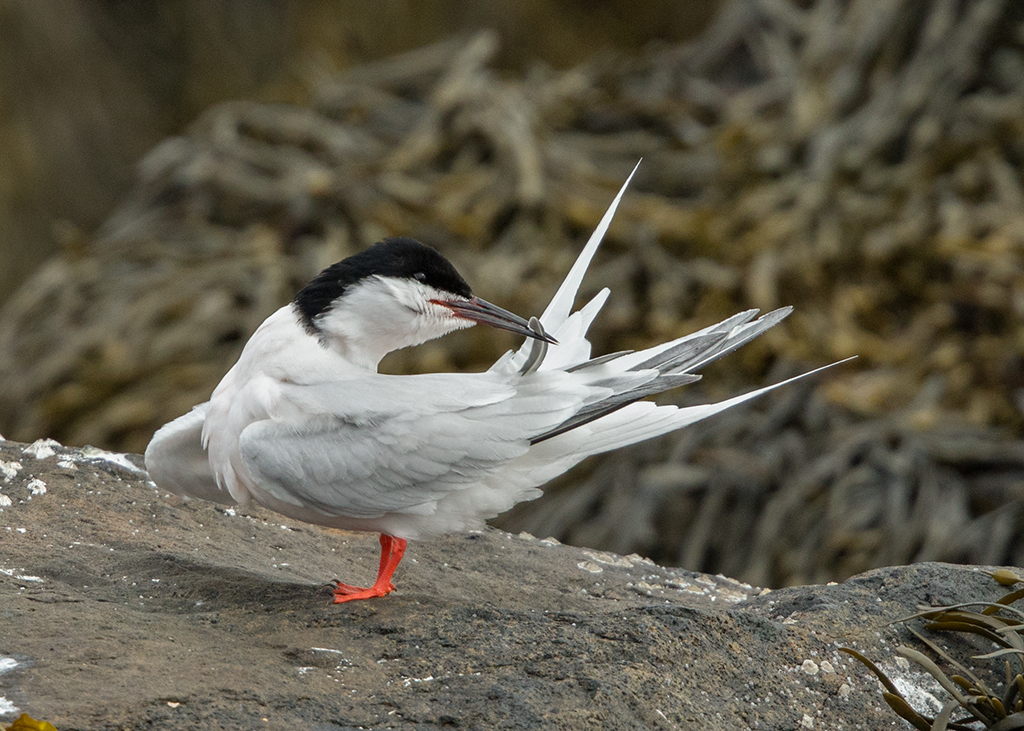 The rosy breast shows ever so slightly and then only in the right light. The biggest give away is the length of the bill.
Unfortunately I never did get to see them in brighter light despite my regular checks as they were often missing although they were occasional seen by others during our week on the island.
One bird that was still plentiful in presence were the female Eider Ducks.
The rosy breast shows ever so slightly and then only in the right light. The biggest give away is the length of the bill.
Unfortunately I never did get to see them in brighter light despite my regular checks as they were often missing although they were occasional seen by others during our week on the island.
One bird that was still plentiful in presence were the female Eider Ducks.
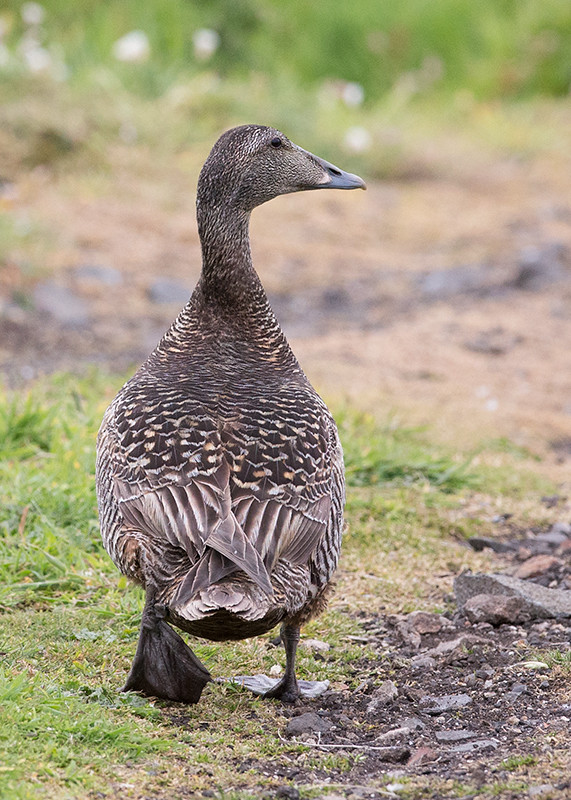 Some where sitting on eggs still but there were few chicks in evidence.
The much more attractive males had all gone back to the mainland, well all except one and that one kept it's distance whenever he saw humans. A far cry from an April visit when their mating calls dominate the island.
Still, the females fishing in the harbour made interesting subjects
Some where sitting on eggs still but there were few chicks in evidence.
The much more attractive males had all gone back to the mainland, well all except one and that one kept it's distance whenever he saw humans. A far cry from an April visit when their mating calls dominate the island.
Still, the females fishing in the harbour made interesting subjects
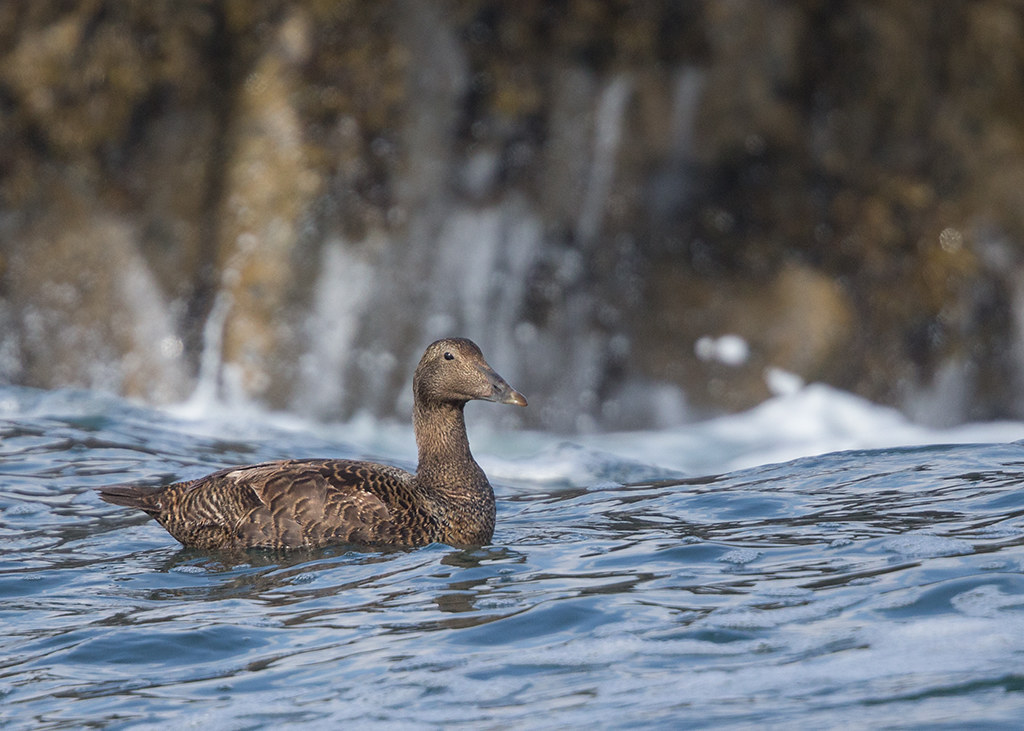 They too tended to keep their distance but this one didn't spot me hiding behind some rocks!
They too tended to keep their distance but this one didn't spot me hiding behind some rocks!
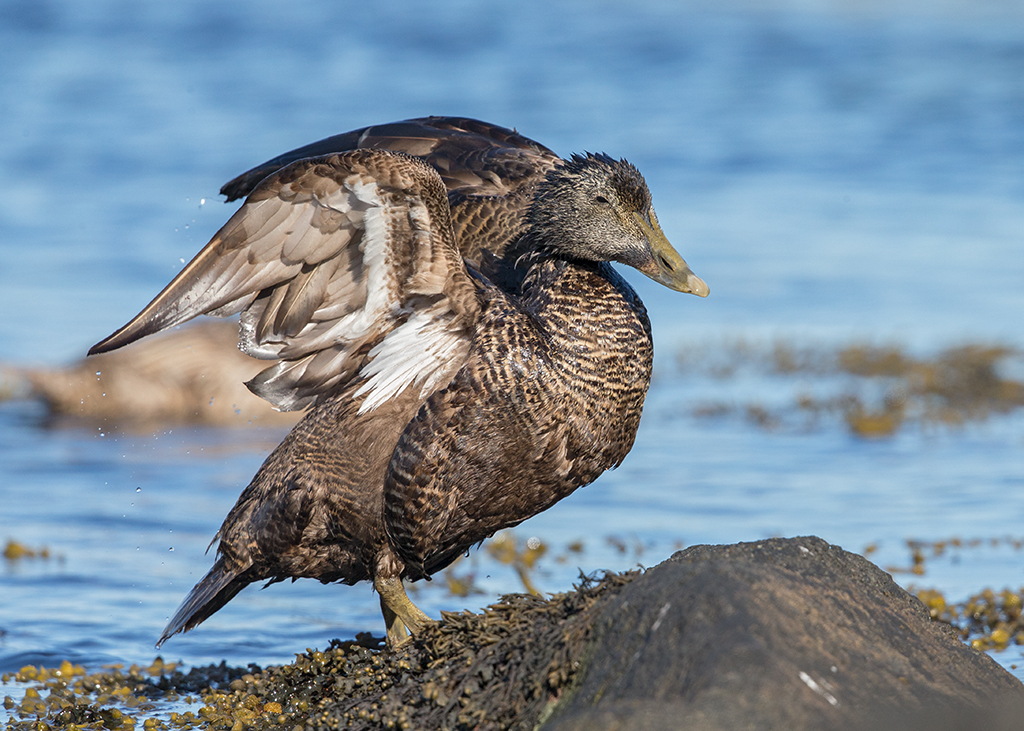 They tend not to fly if they can avoid it, often walking quite long distances but now and again an opportunity for a flight shot presented itself.
They tend not to fly if they can avoid it, often walking quite long distances but now and again an opportunity for a flight shot presented itself.
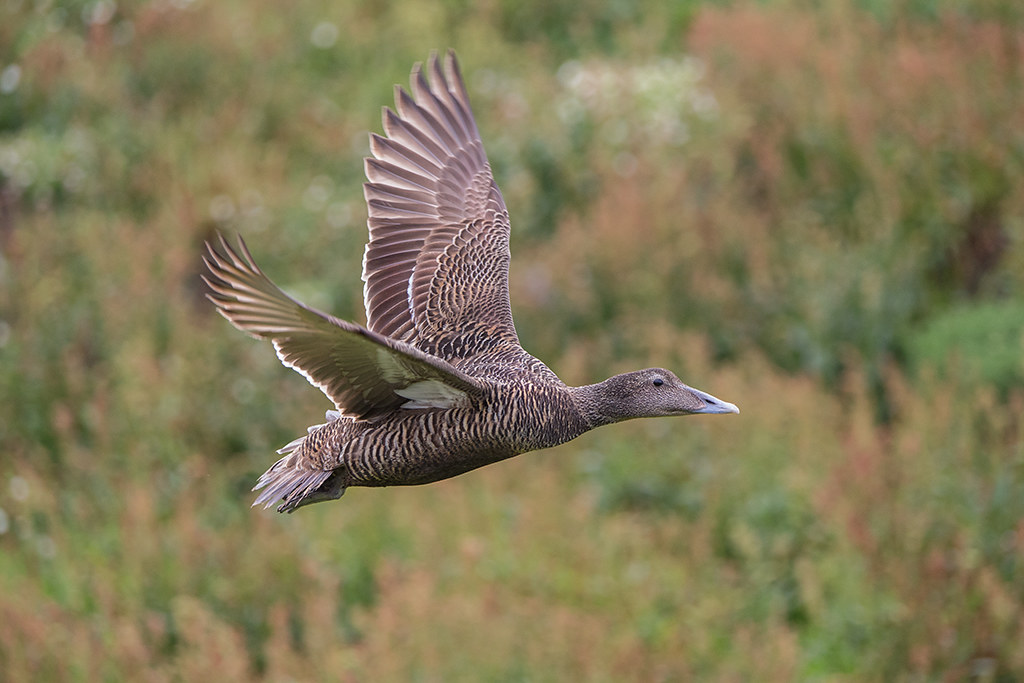 Another breeding bird small in number but loud in voice was the Oystercatcher.
Another breeding bird small in number but loud in voice was the Oystercatcher.
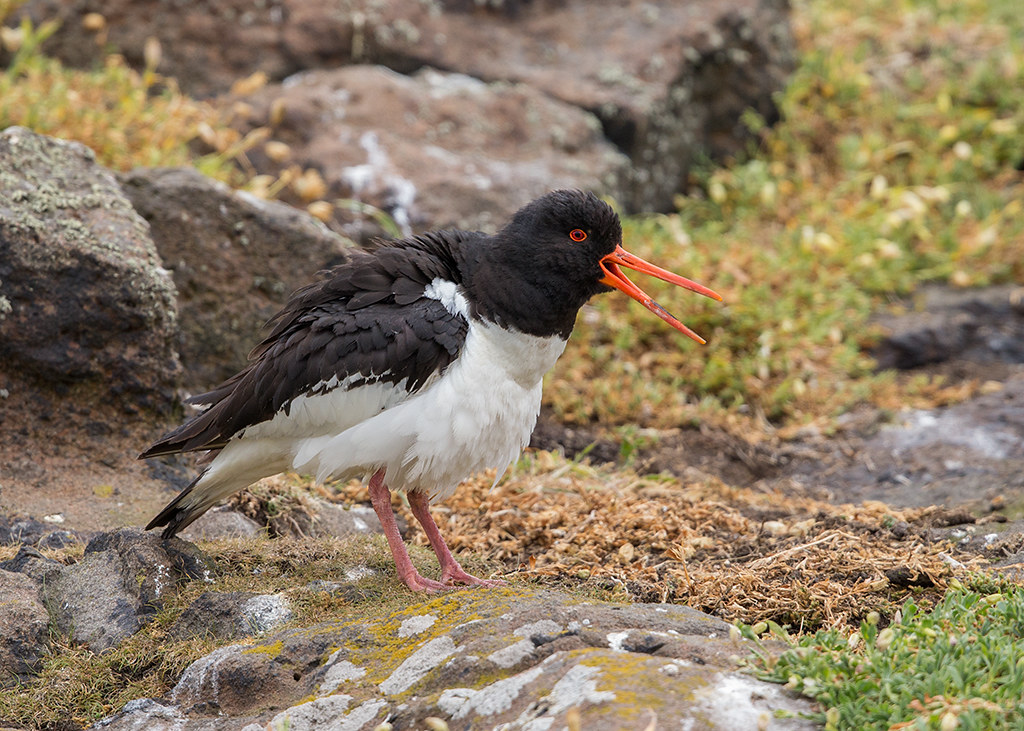 They certainly made quite a loud warning call when perceived danger was about.
They certainly made quite a loud warning call when perceived danger was about.
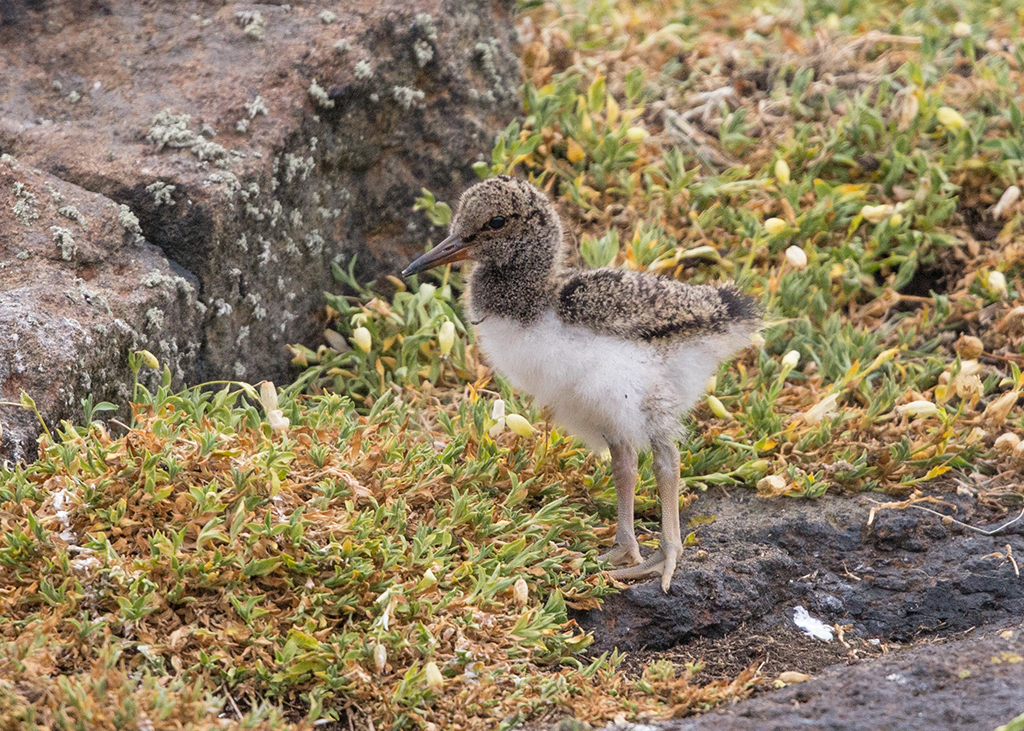 It worked as the chicks were seldom seen.
One brood that were easy to photograph were the Rock Pipit.
It worked as the chicks were seldom seen.
One brood that were easy to photograph were the Rock Pipit.
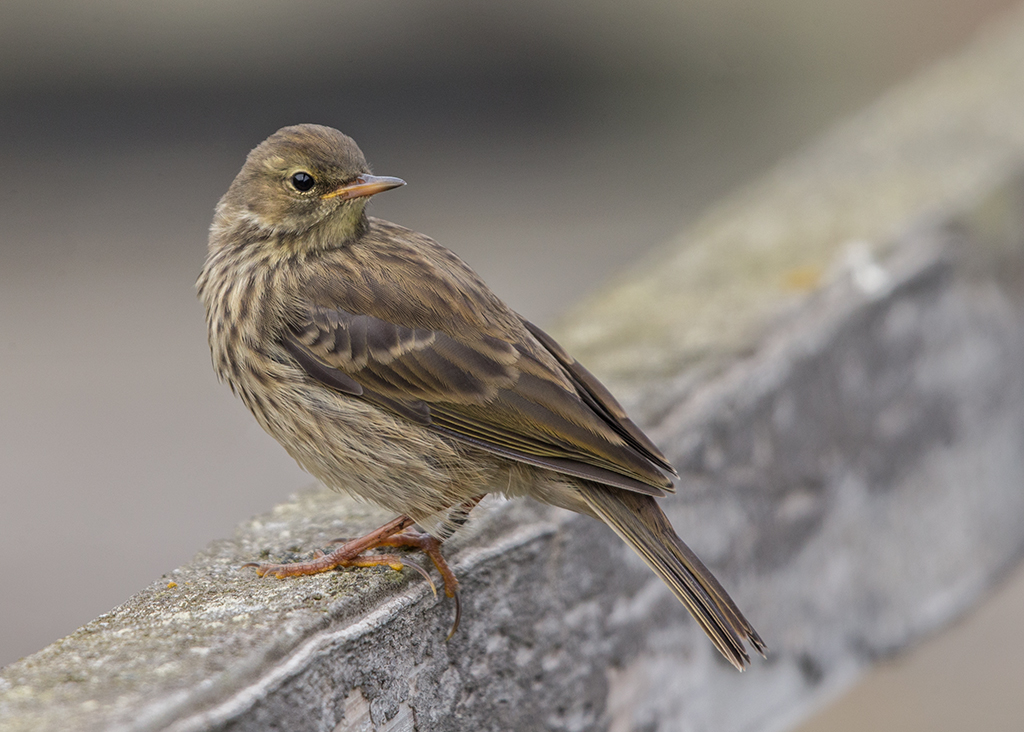 Quite advanced in age they were still being fed by attentive parents.
Quite advanced in age they were still being fed by attentive parents.
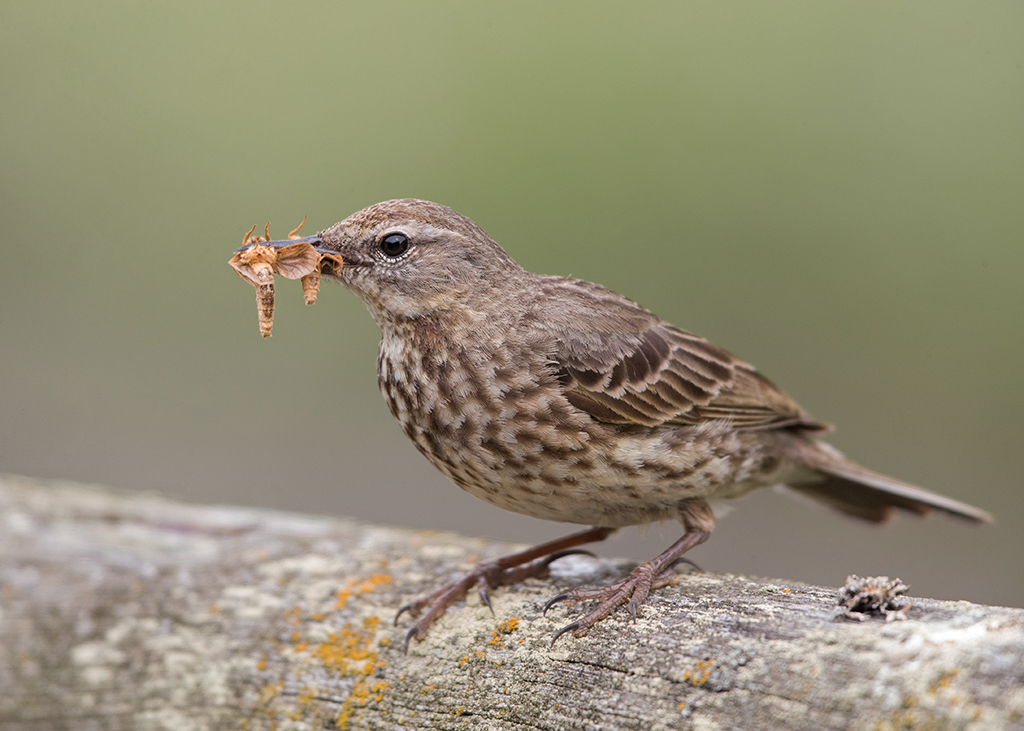 I spent barely 20 minutes with them during the whole week..another regret now!
I was much keener trying to find shots of the Auks with bills full of food.
I had done the Puffins... easy.
I spent barely 20 minutes with them during the whole week..another regret now!
I was much keener trying to find shots of the Auks with bills full of food.
I had done the Puffins... easy.
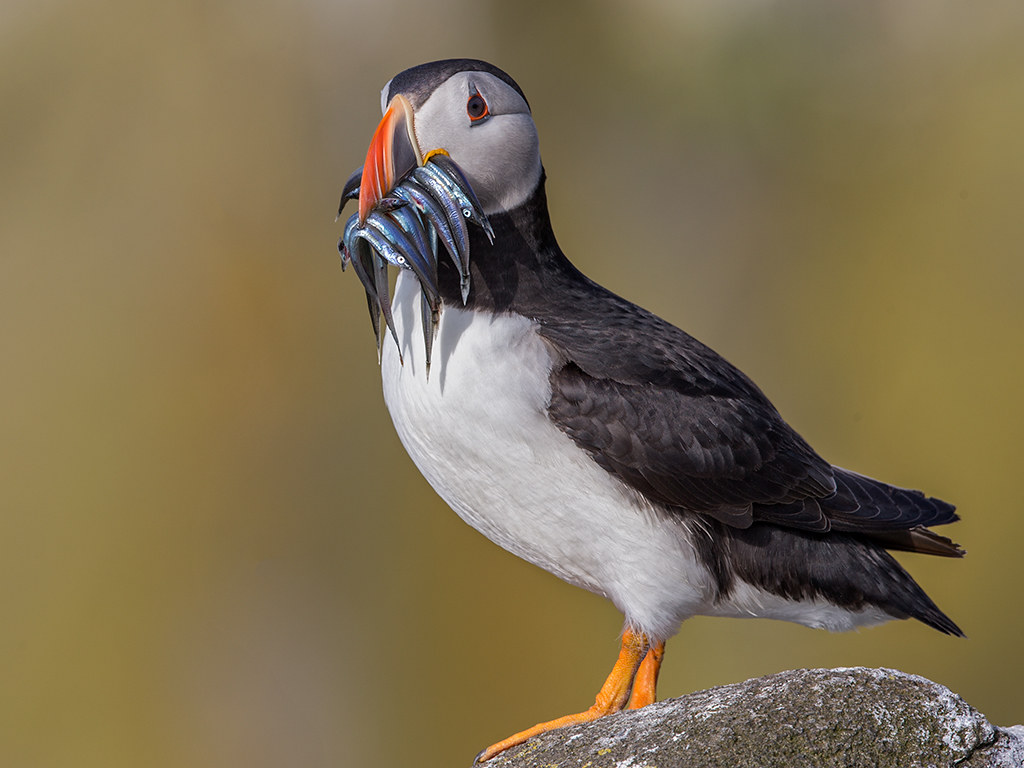 Had a few Guillemots
Had a few Guillemots
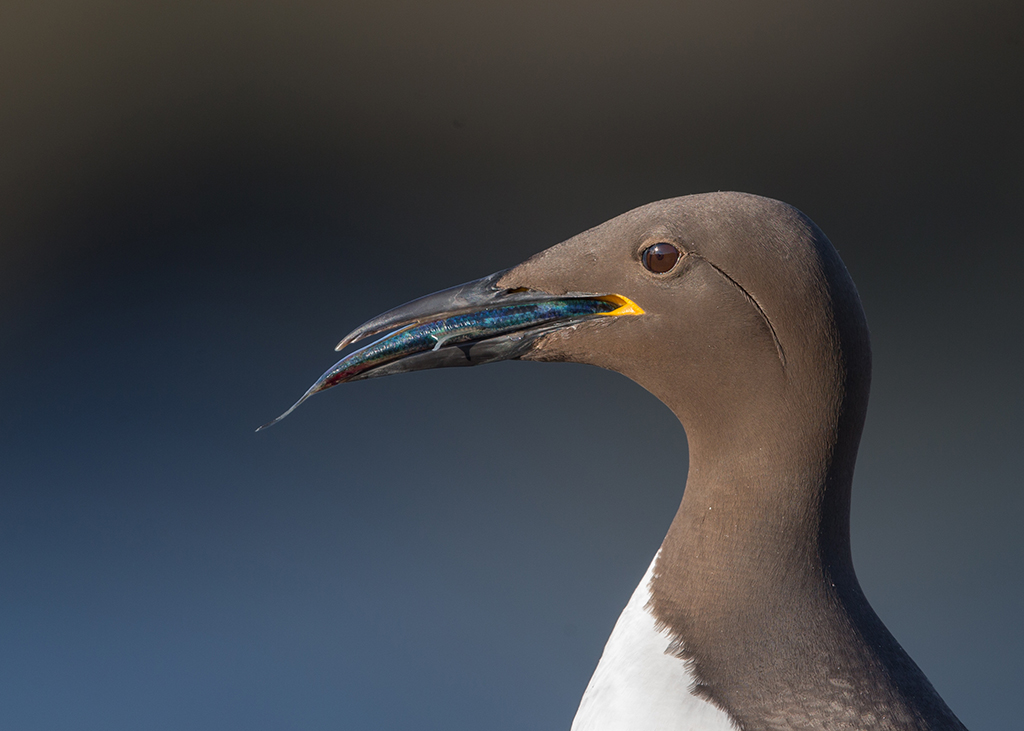 but the Razorbills eluded me right to the end. Another reason to return!
So that was it really, another week over and time to go home.
There is always a sadness on leaving the island. It is a special place for me and many others.
You are cut off from the mainland. Yes, there is mobile reception but that is it. No internet,no TV,no attempt to use the radio.
Just peace of a different kind.
There is plenty of noise, I woke up most mornings around 4.00am with the sound of the Gulls, but there is something special about being out there away from "civilisation".
You are there to witness the battle for survival that all these birds go through each and every day.
Leaving the island behind brings both a sadness and a new expectation of returning home.
There are lots of other places I would love to explore, like the distant Bass Rock, home of one of the world's biggest Gannet colonies.
but the Razorbills eluded me right to the end. Another reason to return!
So that was it really, another week over and time to go home.
There is always a sadness on leaving the island. It is a special place for me and many others.
You are cut off from the mainland. Yes, there is mobile reception but that is it. No internet,no TV,no attempt to use the radio.
Just peace of a different kind.
There is plenty of noise, I woke up most mornings around 4.00am with the sound of the Gulls, but there is something special about being out there away from "civilisation".
You are there to witness the battle for survival that all these birds go through each and every day.
Leaving the island behind brings both a sadness and a new expectation of returning home.
There are lots of other places I would love to explore, like the distant Bass Rock, home of one of the world's biggest Gannet colonies.
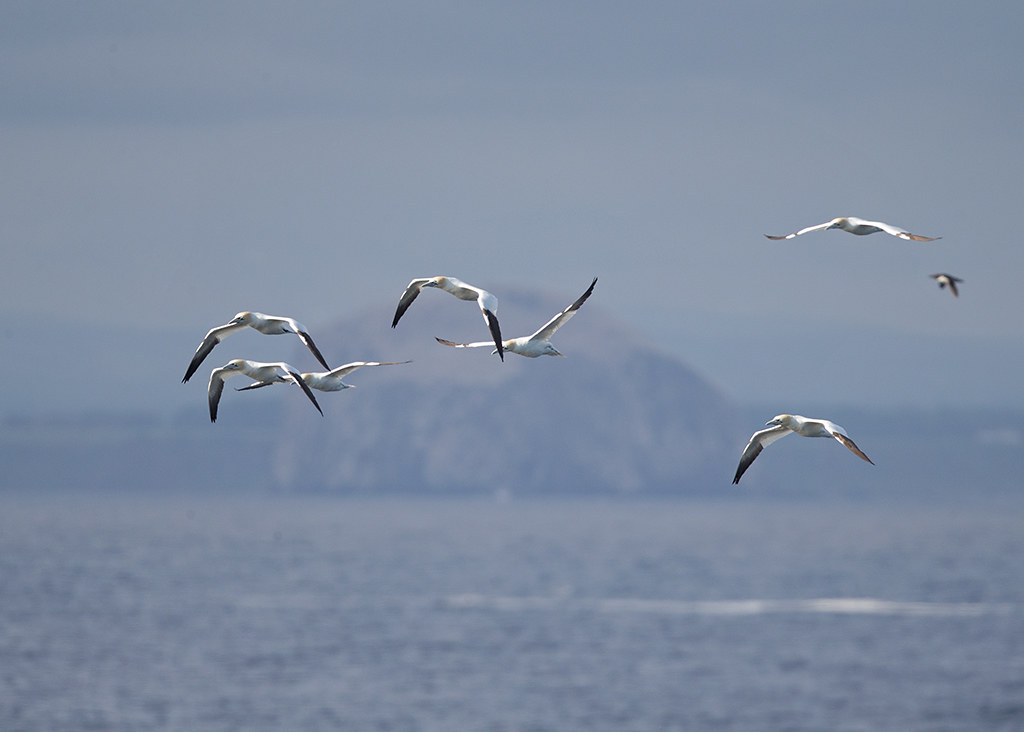 but somehow I know I will return, availability permitting of course.
but somehow I know I will return, availability permitting of course.
A week's visit isn't for everyone but some might like to investigate the opportunity further.
The Observatory web site is here:-
http://www.isleofmaybirdobs.org
Anyone is welcome to apply to stay but members do , rightly, get priority.
It's only £15 per year to join and the money raised goes to good cause.
The autumn migration weeks are always in strong demand but out of that period there is a better chance of applying successfully.
You are guaranteed a warm welcome. Try for yourselves!
Dave
As well as the many thousands of Puffins there are large breeding numbers of other species too. Namely Eider Duck,Shag,Guillemot,Razorbill,Arctic Tern,Kittiwake,Herring Gull and Lesser Black-backed Gull. Fewer in number there are also Great Black-backed Gull, Fulmar,Oystercatcher and Common Tern amongst the seabirds as well as the odd pair of Barn Swallow,Wren,Dunnock,Rock Pipit and I think possibly Starling, although the latter built up numbers to nearly 50 by the time we left.
Amongst the birds passing through we had singles of Chiff Chaff,Goldfinch,Wheatear and Willow Warbler.
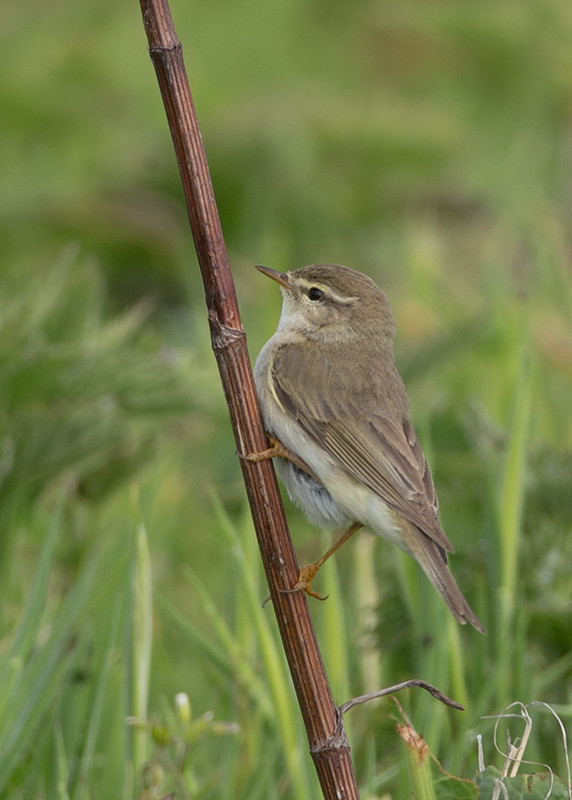
Sea watching proved largely disappointing with no cetaceans spotted at all ( only weeks earlier a pod of 5 Orca had been seen extremely close to the island but it was not to be a return visit) although there are a fair number of Grey Seals that live and breed on the island. The latter not photographable from dry land within the area where access is permitted.
Talking of access, the island has distinct waymarked trails and visitors are asked to stick ridgidly to them because the adjoining land is full of fragile Puffin burrows. The pressure of visitor numbers is always in direct opposition to nature but if they adhere to sensible requests the two can live in harmony.
Let's take Puffins for example. Every visitor wants to take a picture of a cute Puffin with a bill full of Sand Eel but what they don't realise is that the Puffin has flown as far as 80 kms out to sea to find the catch then returned to feed the young. In an ideal world they would drop in to their burrow ( as seen in my previous post's flight shot) and the jobs done but if they spot potential danger they will land away from their nest and wait for the opportunity to dash in when it appears safe to do so.
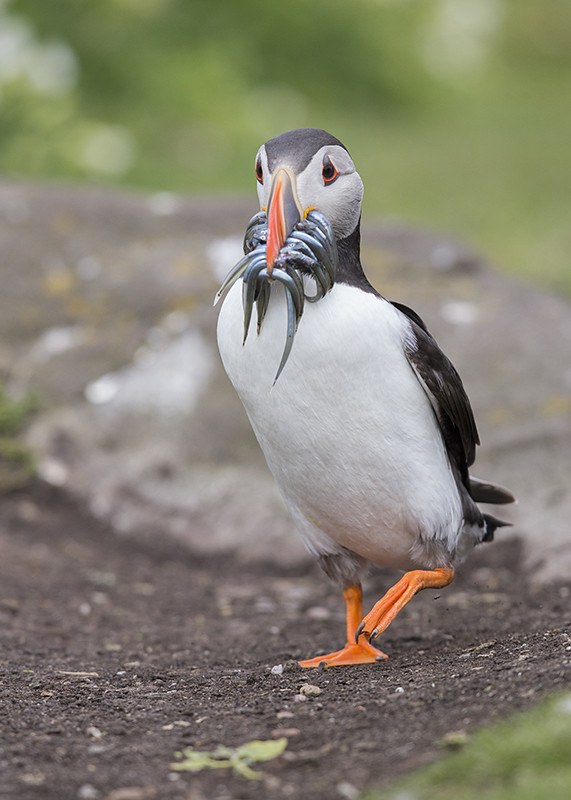 The presence of marauding Gulls ( again seen in the previous post) will send them flying off for another circuit of the island to await the opportunity to land and try again.
These are natural hazards but the introduction of visitors creates additional pressures. The Puffin see the humans as a threat too and will fly off or will sit out the presence of humans until they believe the coast is clear.
Here the only Puffin not to have flown creates a lot of interest!
The presence of marauding Gulls ( again seen in the previous post) will send them flying off for another circuit of the island to await the opportunity to land and try again.
These are natural hazards but the introduction of visitors creates additional pressures. The Puffin see the humans as a threat too and will fly off or will sit out the presence of humans until they believe the coast is clear.
Here the only Puffin not to have flown creates a lot of interest!
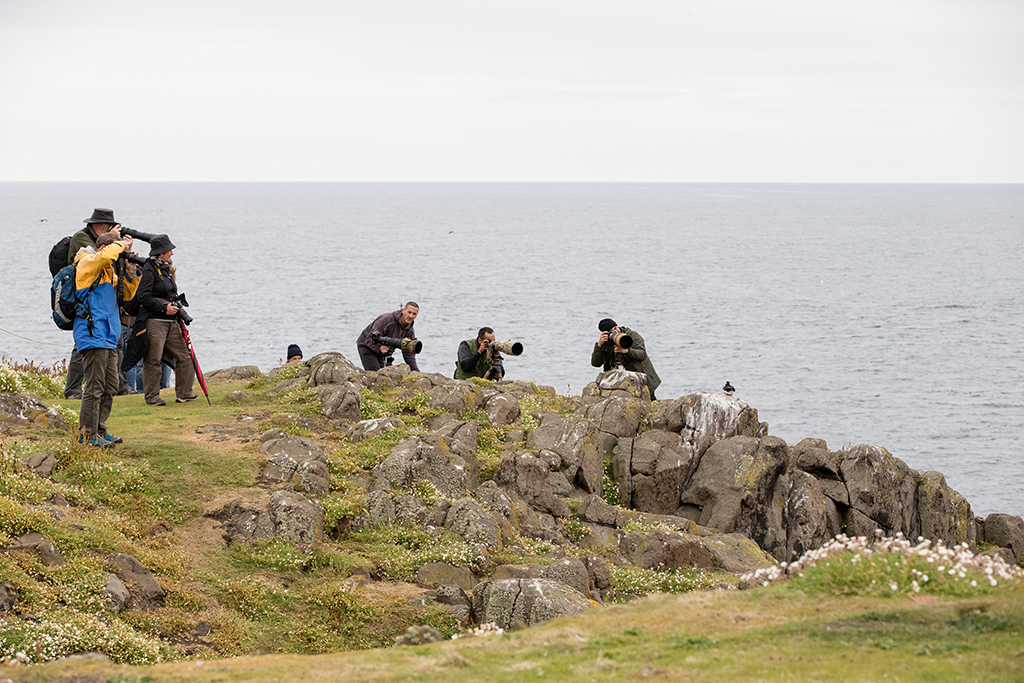 It's worth remembering not to hang around the same spot for too long. You are denying a hungry Pufflet an eagerly awaited meal, perhaps it's first for many hours.
Far less vulnerable to humans are the cliff face breeding birds, in fact many are totally inaccessible to visitors as they nest on precarious rock ledges many,many feet above the sea.
It's worth remembering not to hang around the same spot for too long. You are denying a hungry Pufflet an eagerly awaited meal, perhaps it's first for many hours.
Far less vulnerable to humans are the cliff face breeding birds, in fact many are totally inaccessible to visitors as they nest on precarious rock ledges many,many feet above the sea.
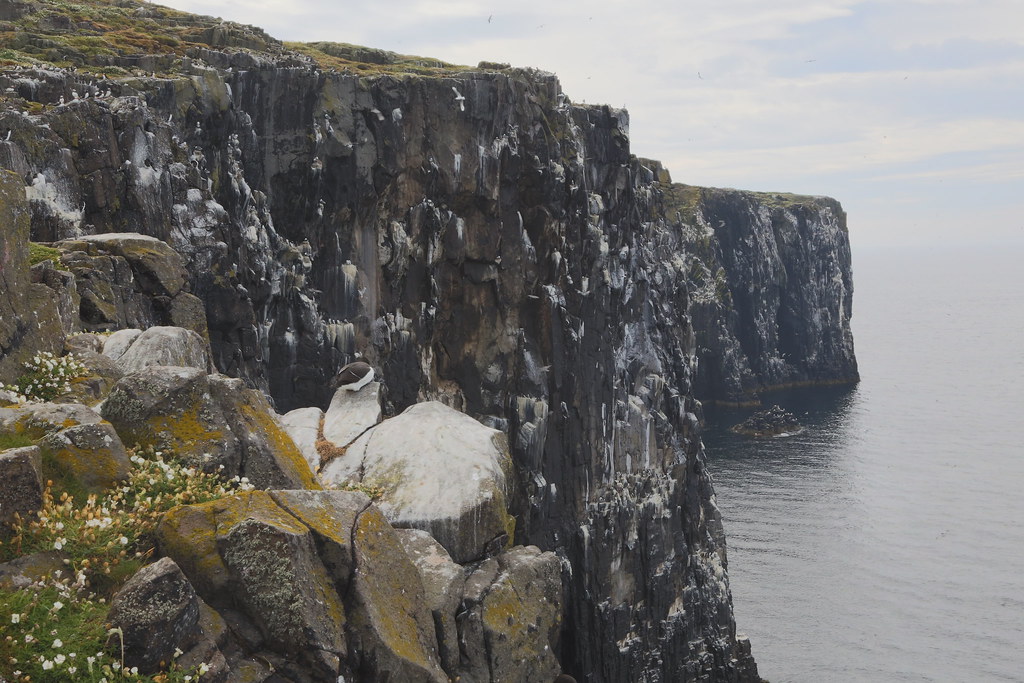 Those that are close to the viewing points seem far less perturbed by humans.... their main threat are from the predating Gulls. The Greater Black-backed patrols the cliff face looking for unguarded chicks which make no more than a snack for such a large bird.
Those that are close to the viewing points seem far less perturbed by humans.... their main threat are from the predating Gulls. The Greater Black-backed patrols the cliff face looking for unguarded chicks which make no more than a snack for such a large bird.
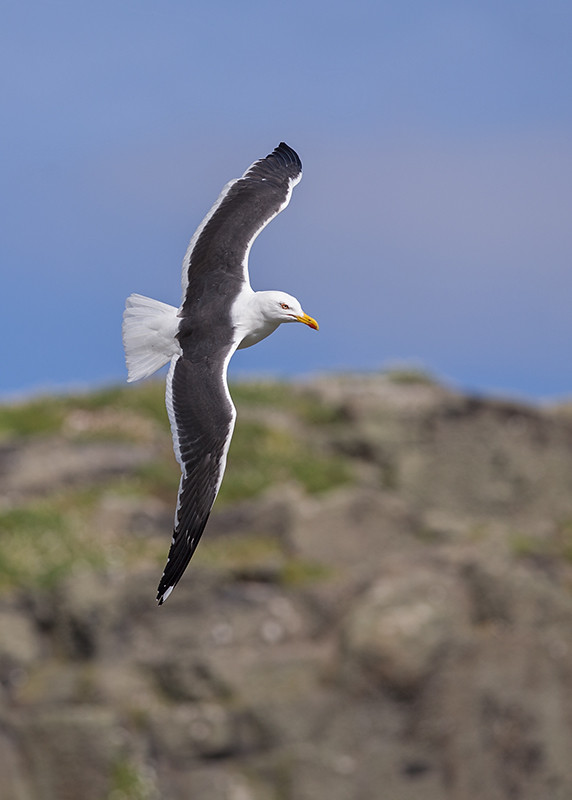 Right up to the time they fledge the youngsters are a potential meal.
Right up to the time they fledge the youngsters are a potential meal.
 As if hurling themselves a 100 feet in to the sea isn't dangerous enough, they can still get picked off once they are in the water. No wonder they choose to leave the nest at night under the cover of darkness.
This June seemed to have witnessed an early breeding season and there were signs that many chicks had already departed or were close to doing so. Some of the Shags were particularly well advanced.
Whereas the Guillemots and Razorbills offer good photo opportunities.
As if hurling themselves a 100 feet in to the sea isn't dangerous enough, they can still get picked off once they are in the water. No wonder they choose to leave the nest at night under the cover of darkness.
This June seemed to have witnessed an early breeding season and there were signs that many chicks had already departed or were close to doing so. Some of the Shags were particularly well advanced.
Whereas the Guillemots and Razorbills offer good photo opportunities.

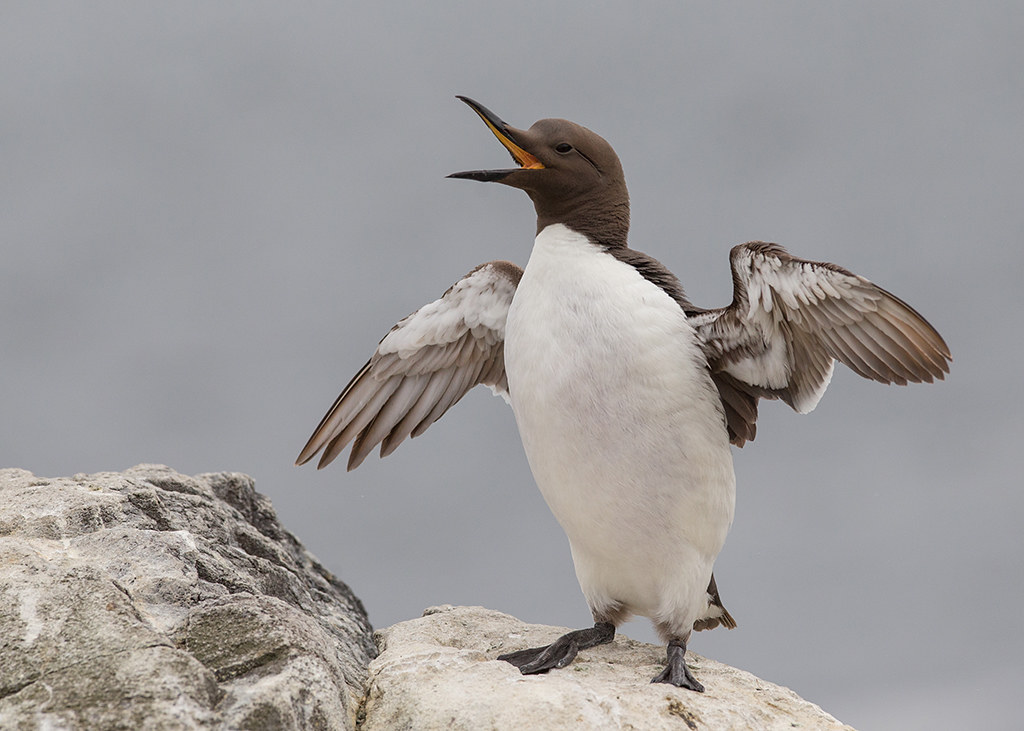 both on the ground and in flight
both on the ground and in flight
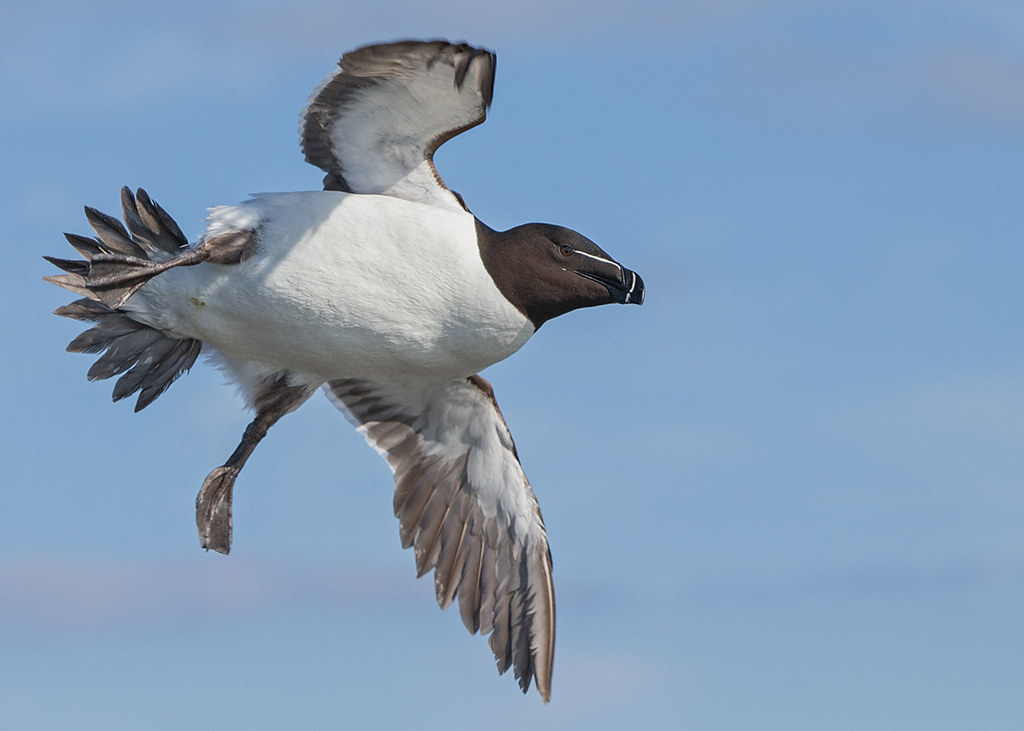
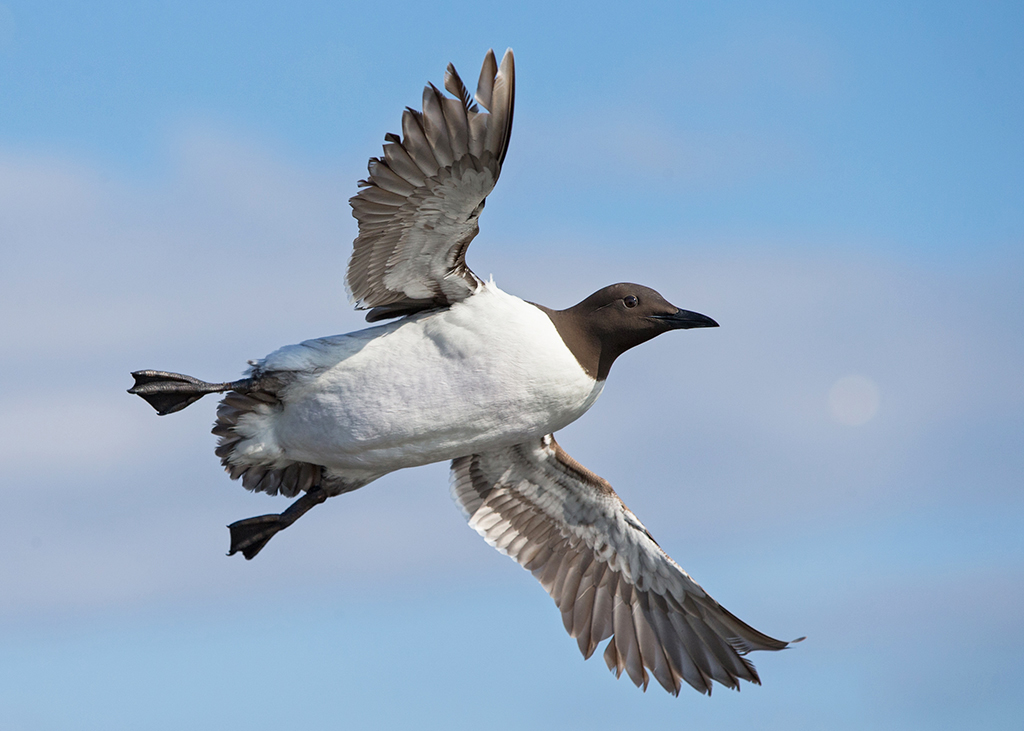 The Shags are both unattractive as chicks
The Shags are both unattractive as chicks
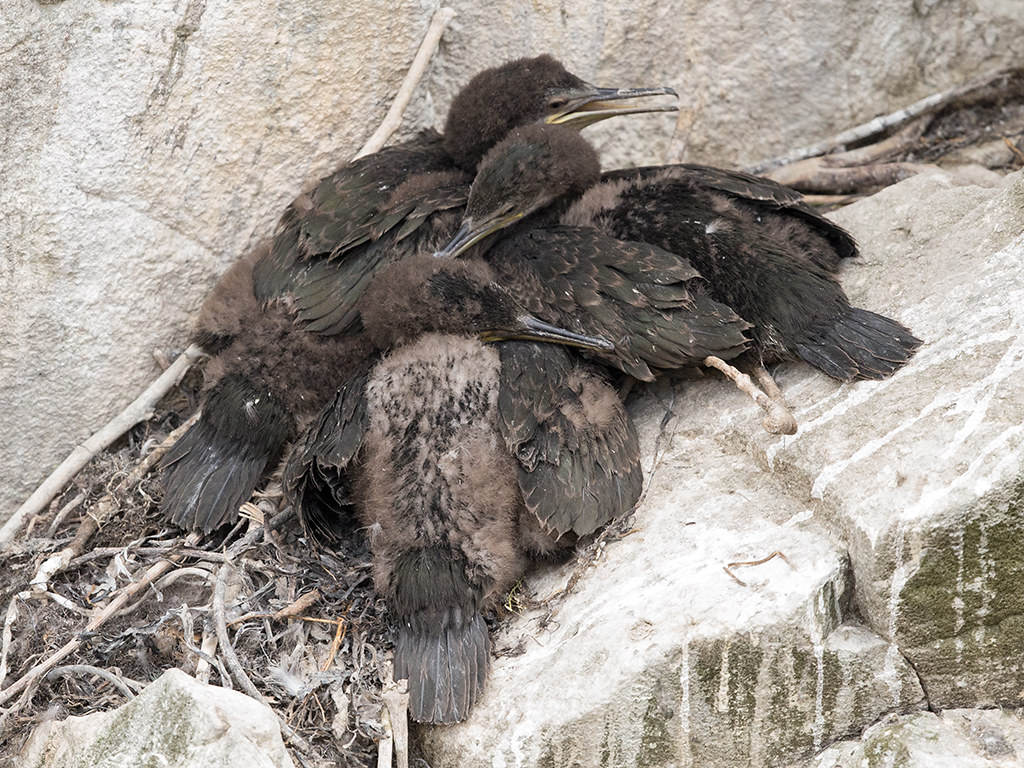 and as juveniles.
and as juveniles.
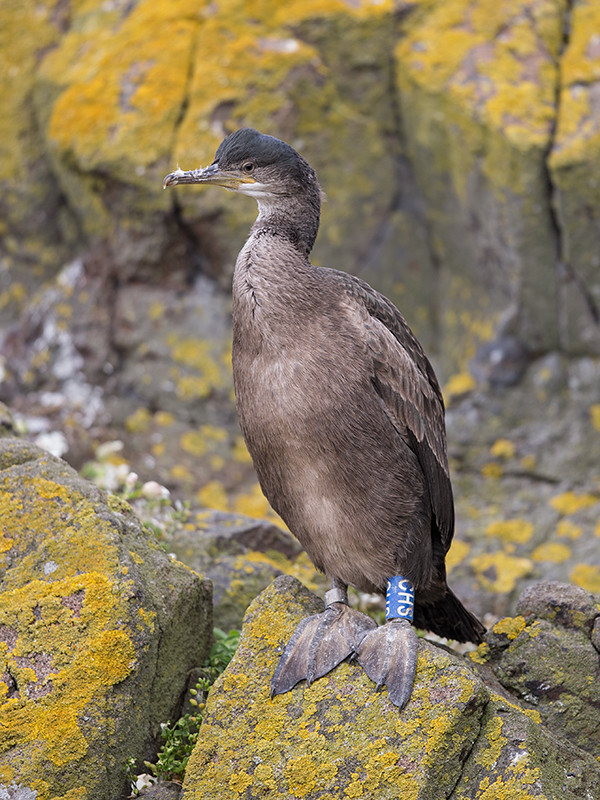 not helped by all that bling they have been adorned with!
It's a reflection on the efficiency of the research teams that finding an adult without a ring is nigh on impossible.
not helped by all that bling they have been adorned with!
It's a reflection on the efficiency of the research teams that finding an adult without a ring is nigh on impossible.
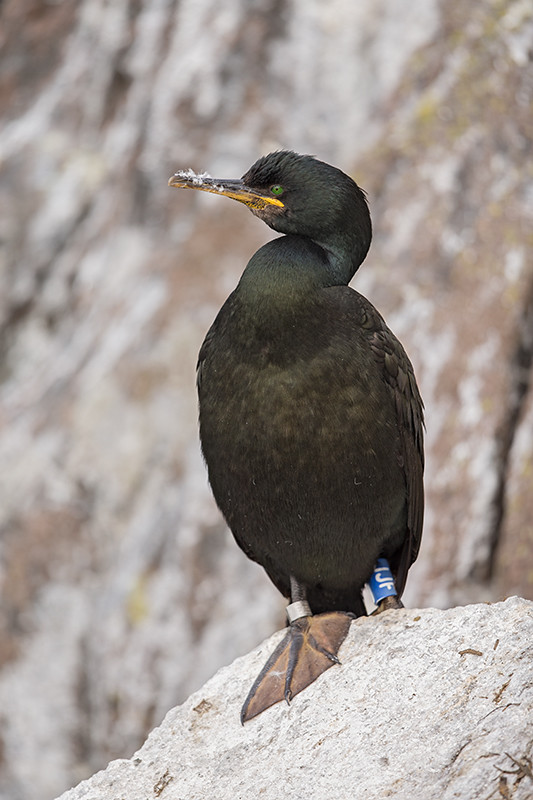 It's difficult enough trying to photograph very dark birds against light backgrounds, especially in the wrong light but with a bit of luck and the right position a half decent image can be obtained.
It's difficult enough trying to photograph very dark birds against light backgrounds, especially in the wrong light but with a bit of luck and the right position a half decent image can be obtained.
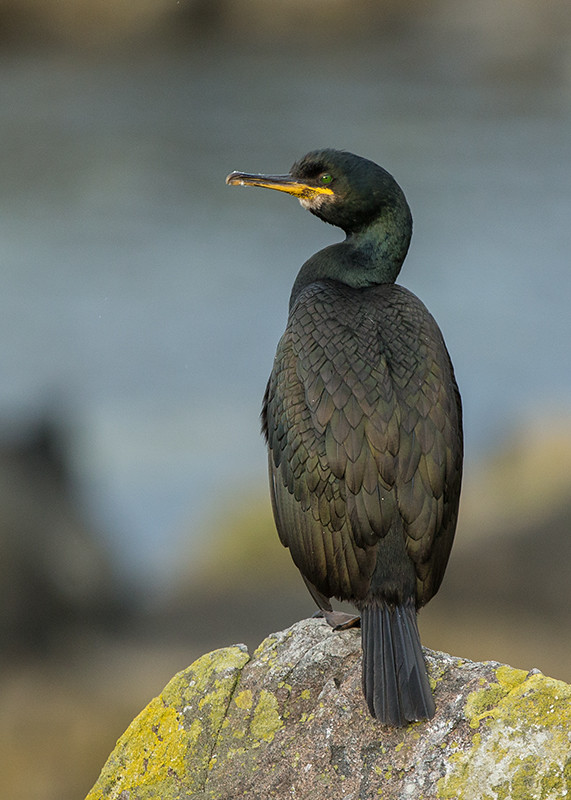 Looking like this you can truly appreciate the glorious colouring the Shag actually possesses.
TBC
Looking like this you can truly appreciate the glorious colouring the Shag actually possesses.
TBC
If the UK can boast about anything avian, it's our seabird colonies. We are lucky to have some of the best in the world, many of which are spectacular island colonies such as the Isle of May which is in some 5 miles off the coast of Fife on the edge of the Firth of Forth.
It's not a huge island by any means, less than 1.5 kms long, half a km wide.
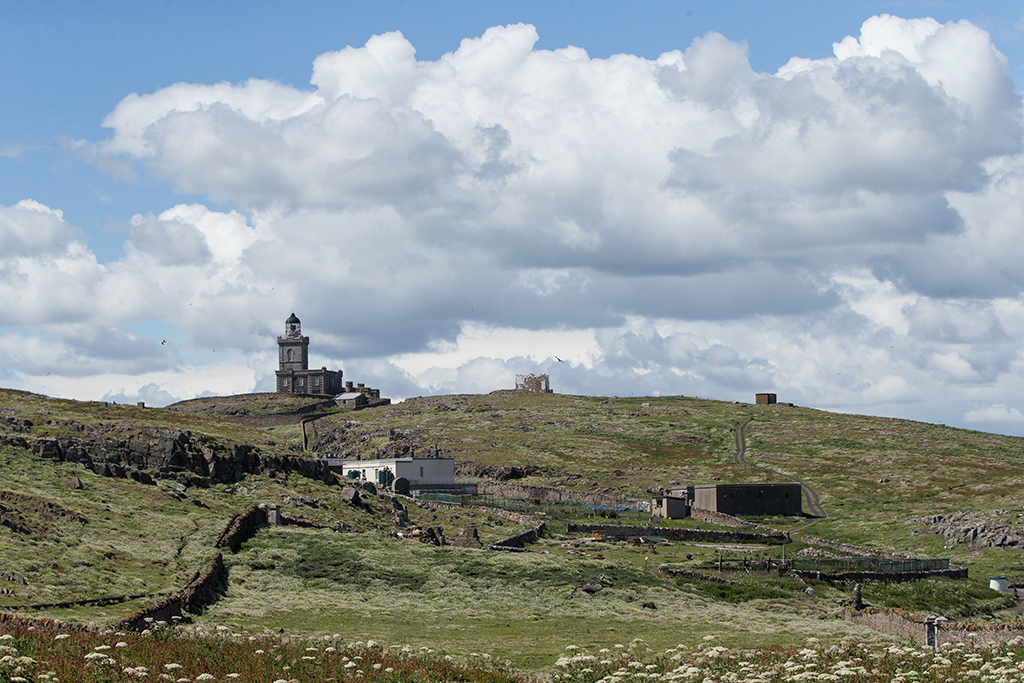 It's home to a research centre, a working lighthouse and a defunct one. The Low Light.
It's home to a research centre, a working lighthouse and a defunct one. The Low Light.
 This is the home of the Bird Observatory, founded by a group of Scottish ornithologists and manned and maintained by member volunteers who usually stay for a week at a time.
I am one such member and part of the commitment is to maintain daily sightings logs.
This is my third visit, my second at this time of year.
June.
Just about the peak season for breeding birds before the young fledge and they all disappear for another year.
June however is not so good for passing migrants, in fact they are few and far between so the number of species you are likely to encounter are probably around the 30 mark.
For company I took along father and son Tony and Richard. Tony is a keen birdwatcher, Richard is one of the UK's top spider specialists and me, well I like taking photos.
A week on the Isle of May is not for everyone, it's a long time if there isn't too much about. Many people just come on the day for a 2-3 hour visit and there are two ways of getting there, either by rib boat
This is the home of the Bird Observatory, founded by a group of Scottish ornithologists and manned and maintained by member volunteers who usually stay for a week at a time.
I am one such member and part of the commitment is to maintain daily sightings logs.
This is my third visit, my second at this time of year.
June.
Just about the peak season for breeding birds before the young fledge and they all disappear for another year.
June however is not so good for passing migrants, in fact they are few and far between so the number of species you are likely to encounter are probably around the 30 mark.
For company I took along father and son Tony and Richard. Tony is a keen birdwatcher, Richard is one of the UK's top spider specialists and me, well I like taking photos.
A week on the Isle of May is not for everyone, it's a long time if there isn't too much about. Many people just come on the day for a 2-3 hour visit and there are two ways of getting there, either by rib boat
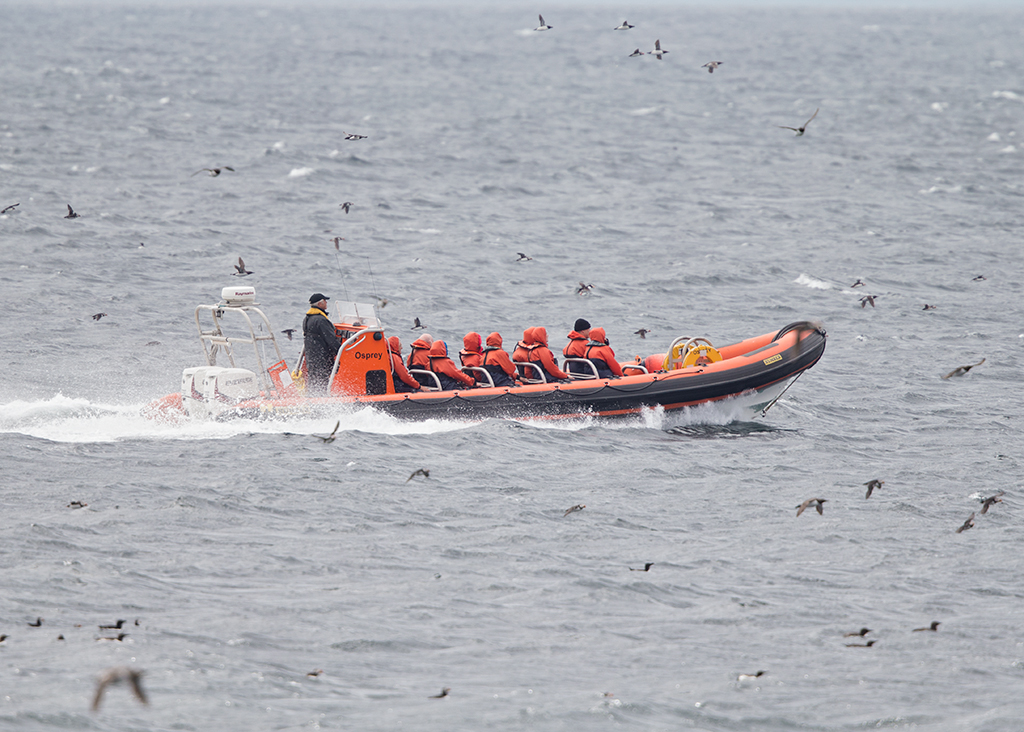 Which can be a little on the wet side
Which can be a little on the wet side
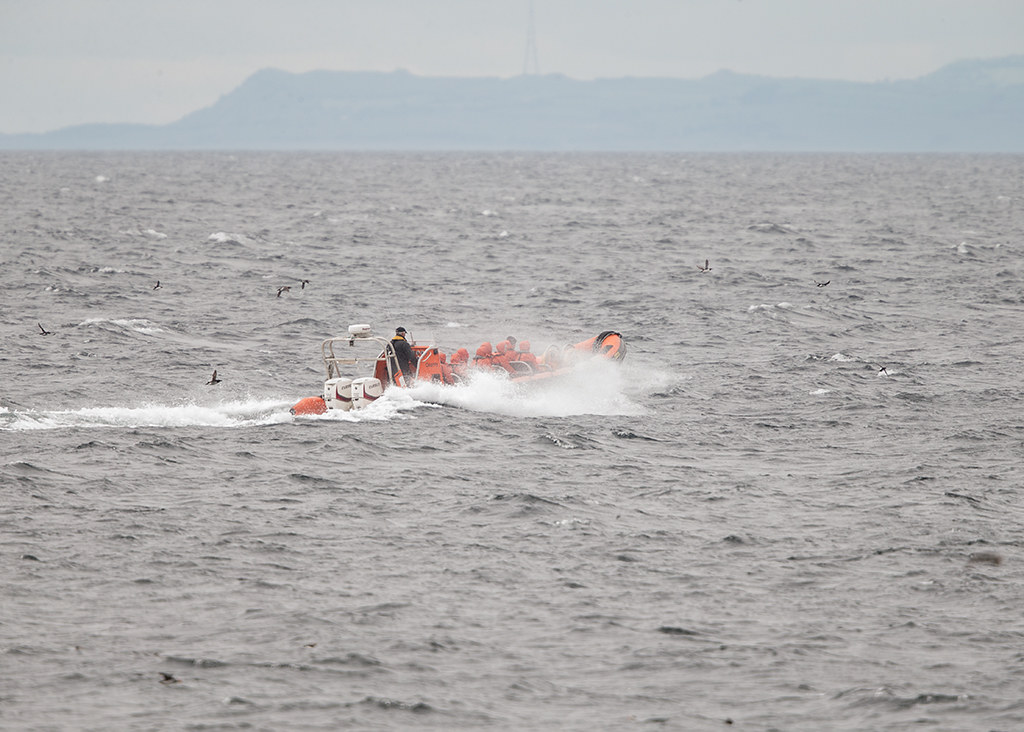 but it's quicker and you can sail from North Berwick too, easier to get to than from Anstruther of the Fife coast from where there's choice of rib boat or the May Princess, the means by which most people arrive.
but it's quicker and you can sail from North Berwick too, easier to get to than from Anstruther of the Fife coast from where there's choice of rib boat or the May Princess, the means by which most people arrive.
 Sailing times are dictated by both tide and weather but while we were there there were no cancellations although on previous visits there have been.
So what do you do if you stay for a week?
Spider hunter Richard undertook a survey of the whole island and found 47 different species, the single largest survey ever completed which included 15 new species for the island. By the end of the week he had covered every likely type of habitat with a couple of days to spare. Tony was somewhat disappointed in the lack of avian variety. Wrong time of year but just observing the seabirds can be a bit repetitive so he was glad to help out with other tasks too.
And me, the photographer ? Well, I guess that after a week I too was near saturation point but the irony is when I got home I wasn't satisfied with my efforts and I'm going to have to go back again, hopefully for some better weather than the rather dull miserable light we were largely having during our stay.
So for the record here are some of my efforts:-
Number one photogenic species has to be the Puffin. There are over 40,000 pairs so there is no lack of choice!
By day 1 I had covered most options for the Puffin with Sand Eels in bill shot.
Sailing times are dictated by both tide and weather but while we were there there were no cancellations although on previous visits there have been.
So what do you do if you stay for a week?
Spider hunter Richard undertook a survey of the whole island and found 47 different species, the single largest survey ever completed which included 15 new species for the island. By the end of the week he had covered every likely type of habitat with a couple of days to spare. Tony was somewhat disappointed in the lack of avian variety. Wrong time of year but just observing the seabirds can be a bit repetitive so he was glad to help out with other tasks too.
And me, the photographer ? Well, I guess that after a week I too was near saturation point but the irony is when I got home I wasn't satisfied with my efforts and I'm going to have to go back again, hopefully for some better weather than the rather dull miserable light we were largely having during our stay.
So for the record here are some of my efforts:-
Number one photogenic species has to be the Puffin. There are over 40,000 pairs so there is no lack of choice!
By day 1 I had covered most options for the Puffin with Sand Eels in bill shot.
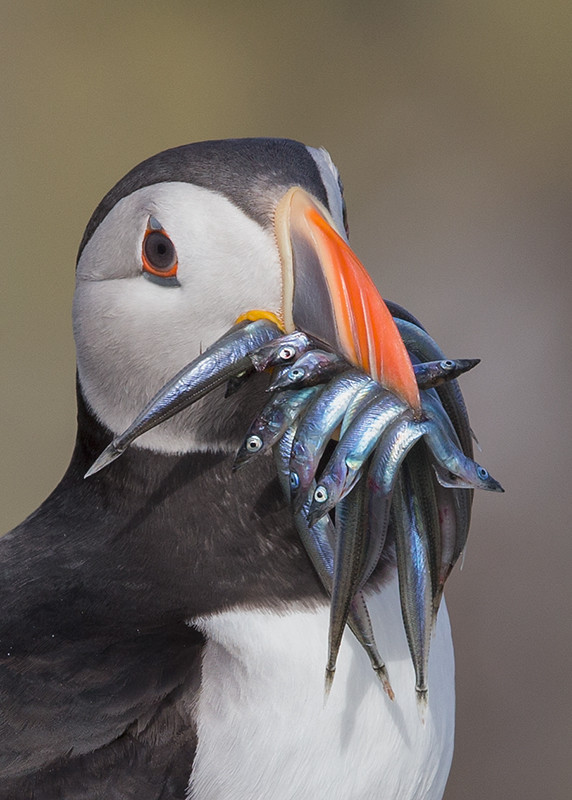 With time to experiment you can alter depth of field to try and get as much of the Sand Eeel and bird in focus.
With time to experiment you can alter depth of field to try and get as much of the Sand Eeel and bird in focus.
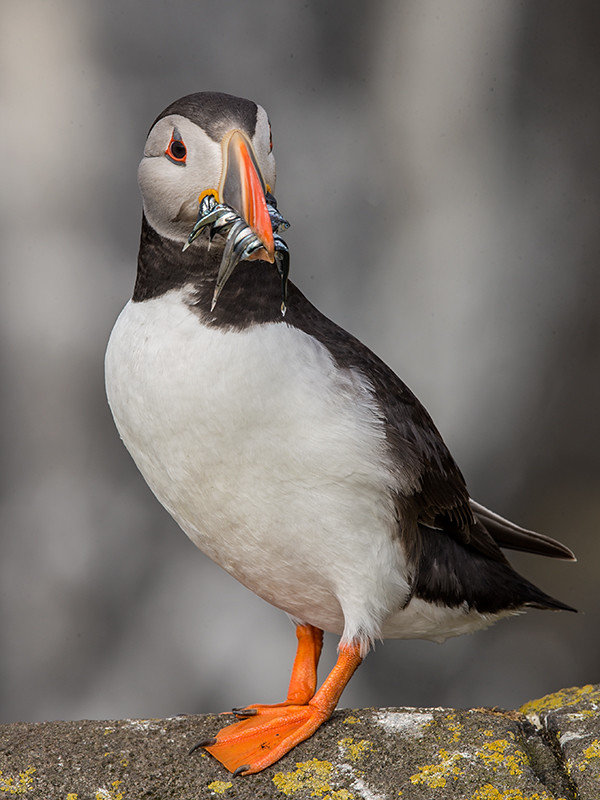 Once you have the classic pose covered you can try for the movement shots. A little walk perhaps
Once you have the classic pose covered you can try for the movement shots. A little walk perhaps
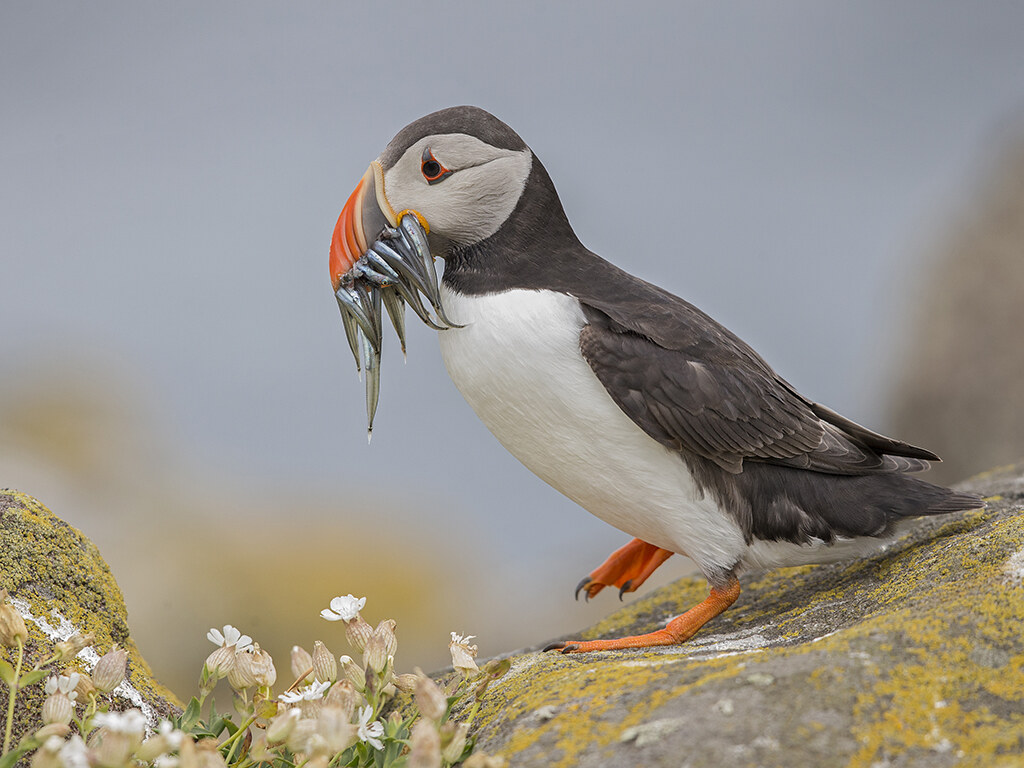 Maybe a flap of the wings
Maybe a flap of the wings
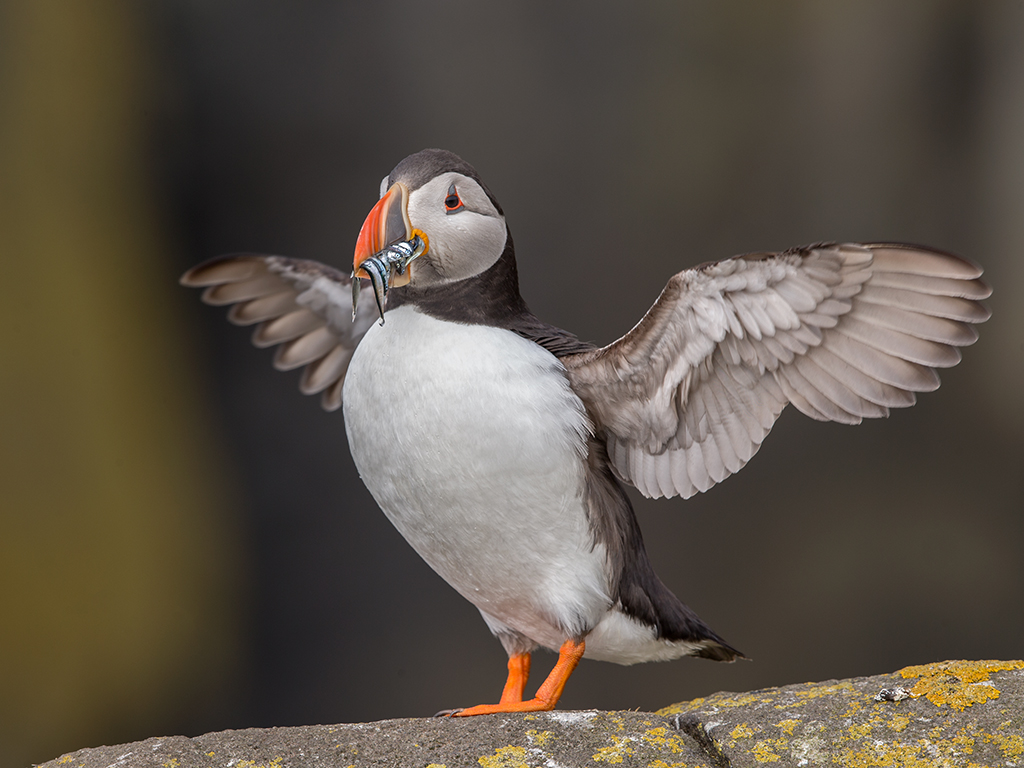 Then you graduate on to flight shots.
Then you graduate on to flight shots.
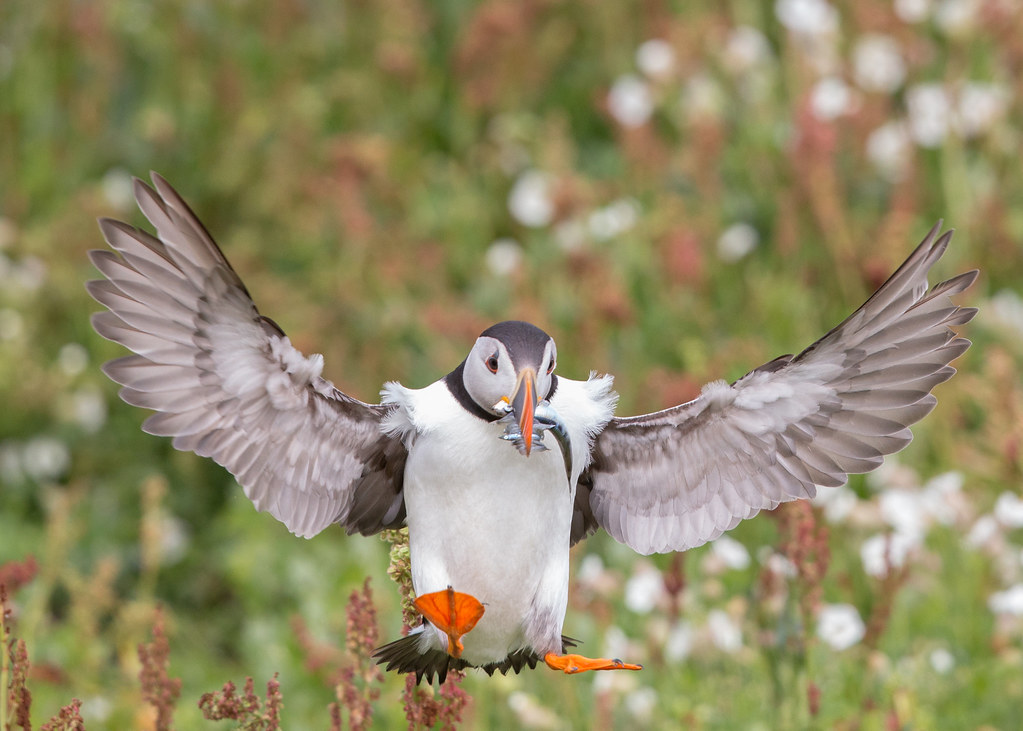 or even better, try for some real action.
Both Herring Gull and Lesser Black-backed harass incoming Puffins in the hope of getting them to drop their catch. There are two tactics !
One is to try an in flight ambush
or even better, try for some real action.
Both Herring Gull and Lesser Black-backed harass incoming Puffins in the hope of getting them to drop their catch. There are two tactics !
One is to try an in flight ambush
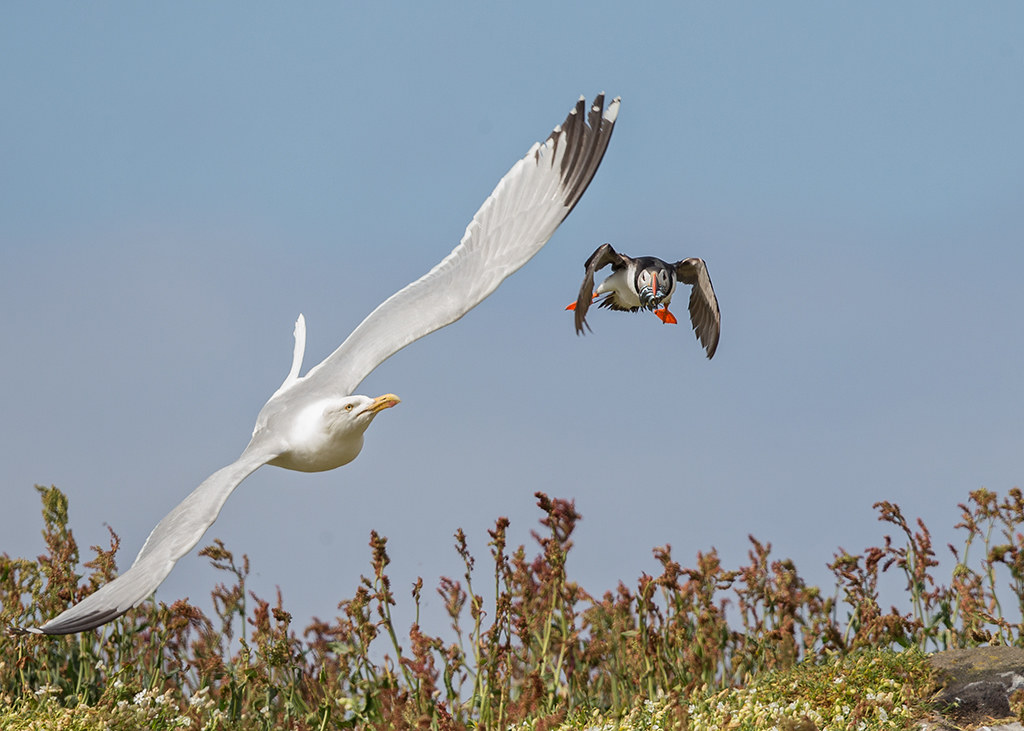 The other is to sneak up on them and rush in at the last minute hoping to pounce on the victim.
The other is to sneak up on them and rush in at the last minute hoping to pounce on the victim.
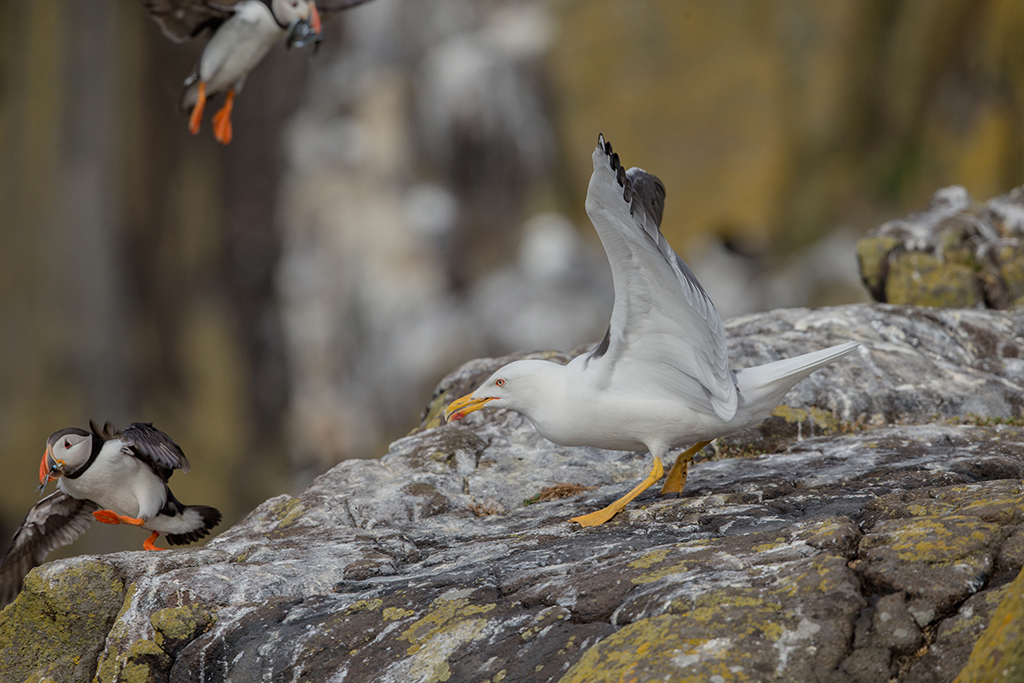 Well I had a limited amount of success , the Gulls did better but not in either of these two shots when the Puffin successfully kept their catch.
So what else was about ?
TBC
Well I had a limited amount of success , the Gulls did better but not in either of these two shots when the Puffin successfully kept their catch.
So what else was about ?
TBC













